Raglan Castle (Cadw)
Attraction information, get in touch, social media navigation, found a problem with this page report it here.
- Accessibility Facilities
- Cater For Groups
- Children Welcome
- Hearing Accessibility Facilities
- Mobility Accessibility Facilities
- Pets Accepted


Like what you see?
Take a look around, about raglan castle (cadw), 51.770298, -2.84917951, related stories, visit our unesco world heritage sites in wales.
Find out how to make the most of your visit to each of the four UNESCO World Heritage Sites in Wales.
- UNESCO Heritage
- Amazing places
Instagram-friendly Welsh landmarks
Take a look at these ten must-see Instagrammable coastal landmarks for you and your camera.
- Countryside
Is Wales the castle capital of Europe?
With over 400 castles, wherever you go on holiday in Wales, you won't be too far from one to visit.
- Historic buildings
A Royal Mint experience
Discover the history of coins and how they are made at the Royal Mint Experience in Llantrisant.
Before you start...
This site uses animations - they can be turned off.
Terms and Conditions
By using this site, you confirm you agree to our Terms and Conditions .
We'd Like to Hear From You
By answering a few questions , we'll give you the chance to win £500. By doing so you will also help us improve this website and help with your holiday planning and travel needs.
Good for you. Good for us. Teamwork!
Raglan Castle
Southeast Wales
The last great medieval castle to be built in Wales, Raglan was designed more as a swaggering declaration of wealth and power than a defensive fortress. A magnificent, sprawling complex built of dusky pink and grey sandstone, it was constructed in the 15th and 16th centuries by Sir William ap Thomas and his son William Herbert, the first earl of Pembroke.
Its centrepiece, the lavish Great Tower, a hexagonal keep ringed by a moat, bears a savage wound from the civil wars of the 1640s, when it was besieged by Cromwell's soldiers. After the castle's surrender the tower was undermined, until eventually two of the six walls collapsed. The impressive courtyards beyond the Great Tower display the transition from fortress to grandiose palace, with ornate windows and fireplaces, gargoyle-studded crenellations and heraldic carvings.
Raglan Castle is on the busy A40, 8 miles southwest of Monmouth and 9 miles southeast of Abergavenny. Buses heading between the two stop at Raglan village, which is a five-minute walk from the castle.
Get In Touch
https://www.cadw.wales.gov.uk/
Lonely Planet's must-see attractions
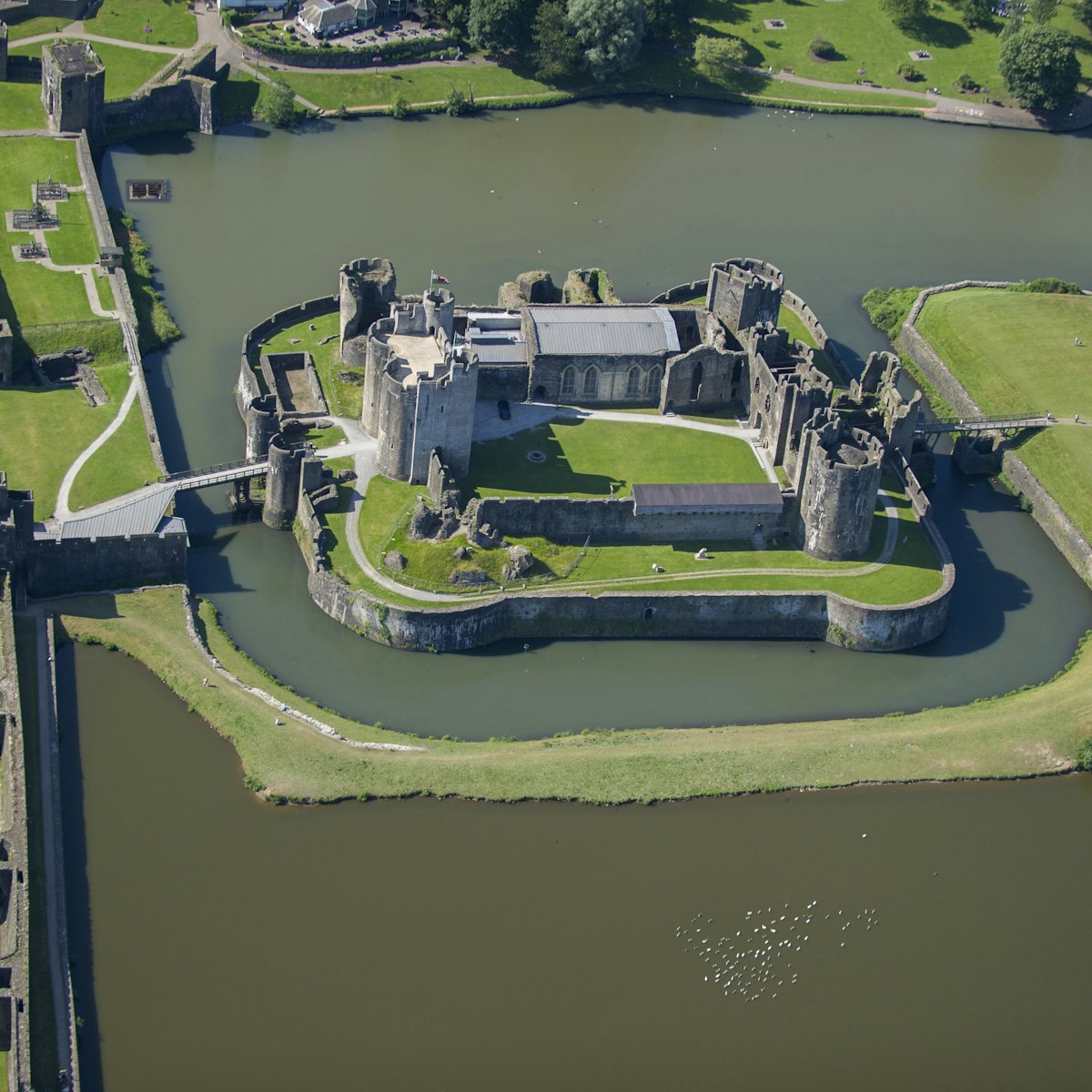
Caerphilly Castle
20.83 MILES
You could be forgiven for thinking that Caerphilly Castle – with its profusion of towers and crenellations reflected in a duck-filled lake – was a film…

Hereford Cathedral
20.47 MILES
After Welsh marauders torched the original Saxon cathedral, the Norman rulers of Hereford erected a larger, grander cathedral on the same site. The…
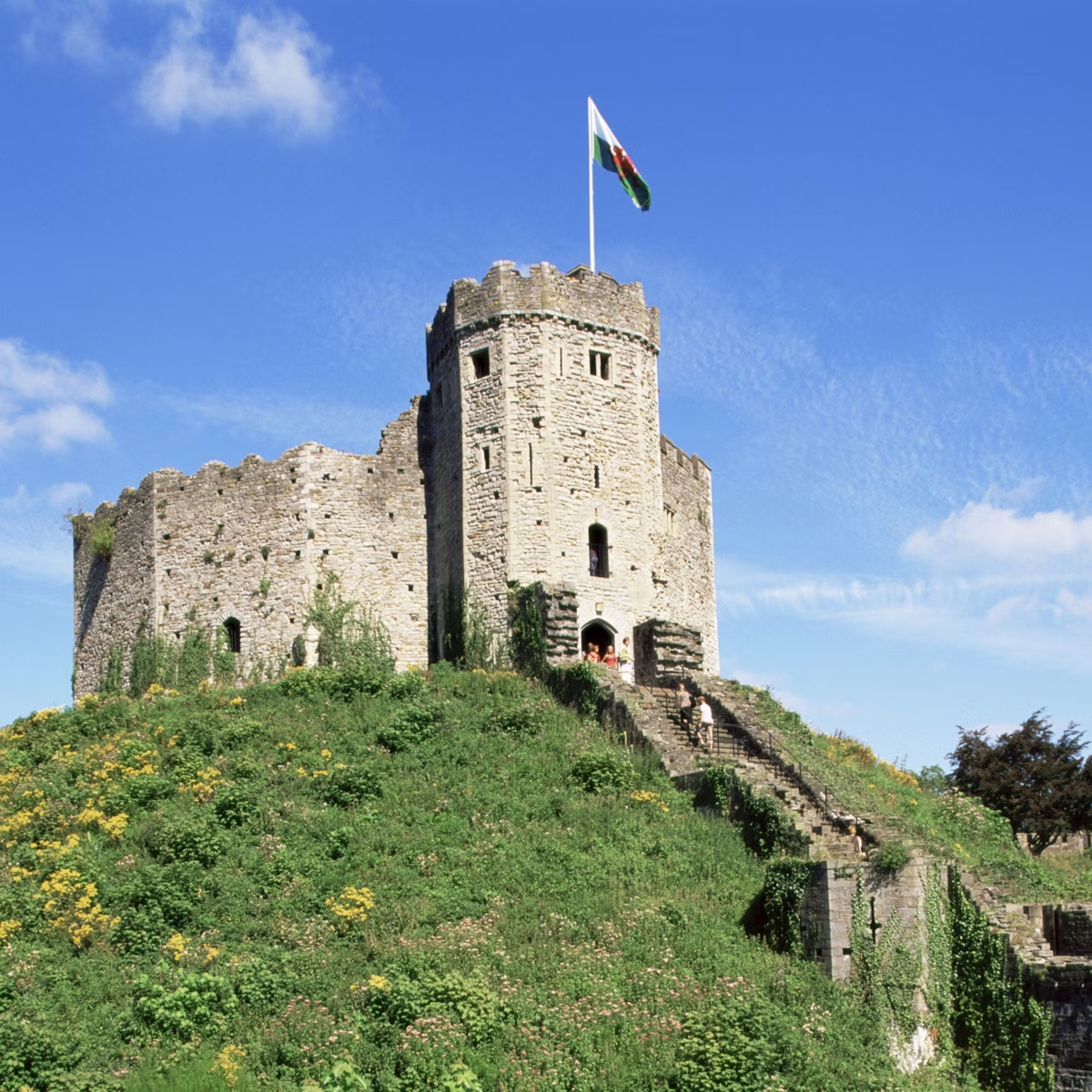
Cardiff Castle
24.51 MILES
There's a medieval keep at its heart, but it's the later additions to Cardiff Castle that really capture the imagination. In Victorian times, extravagant…
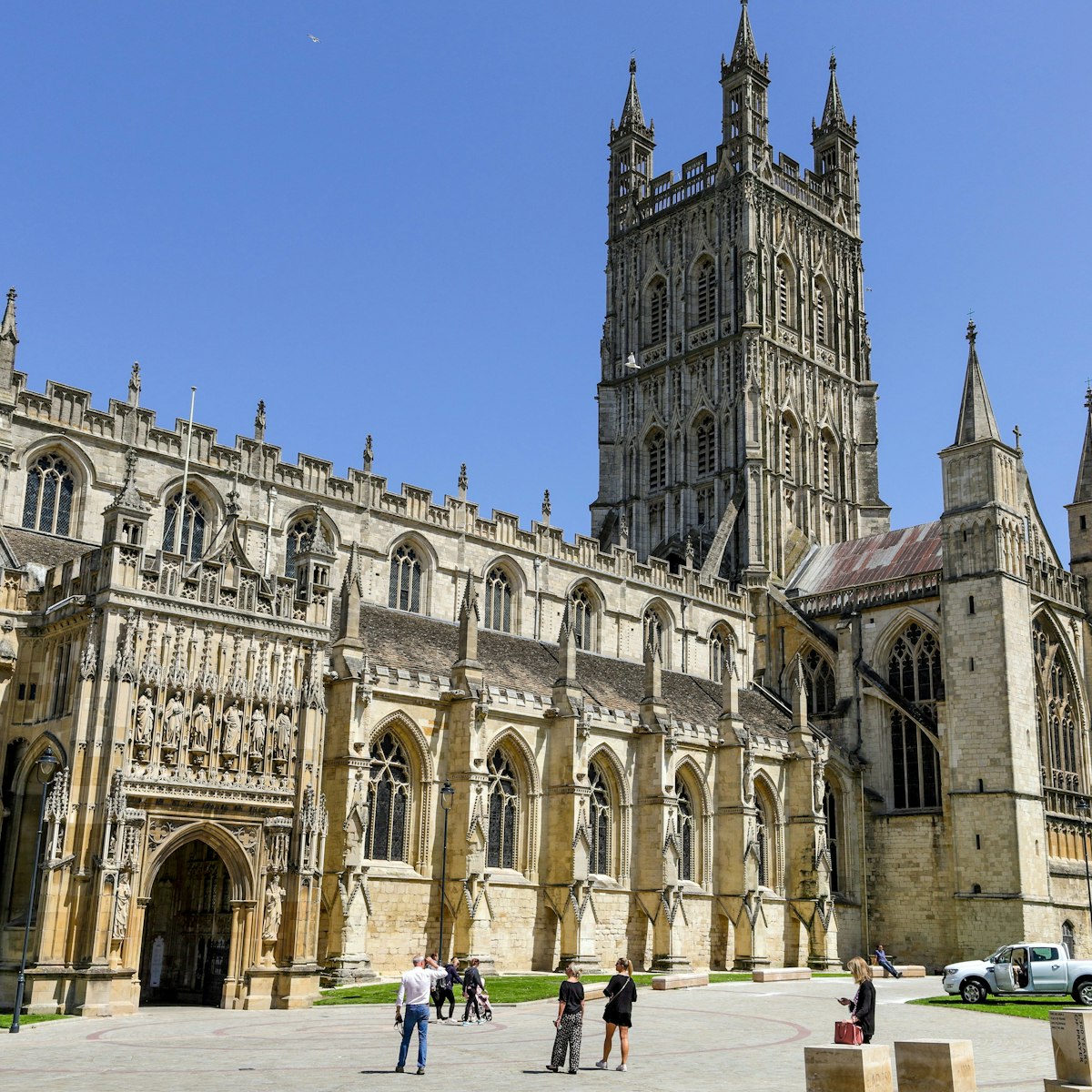
Gloucester Cathedral
Gloucester’s spectacular cathedral is among the first and finest examples of the English Perpendicular Gothic style. Benedictine monks built a Norman…
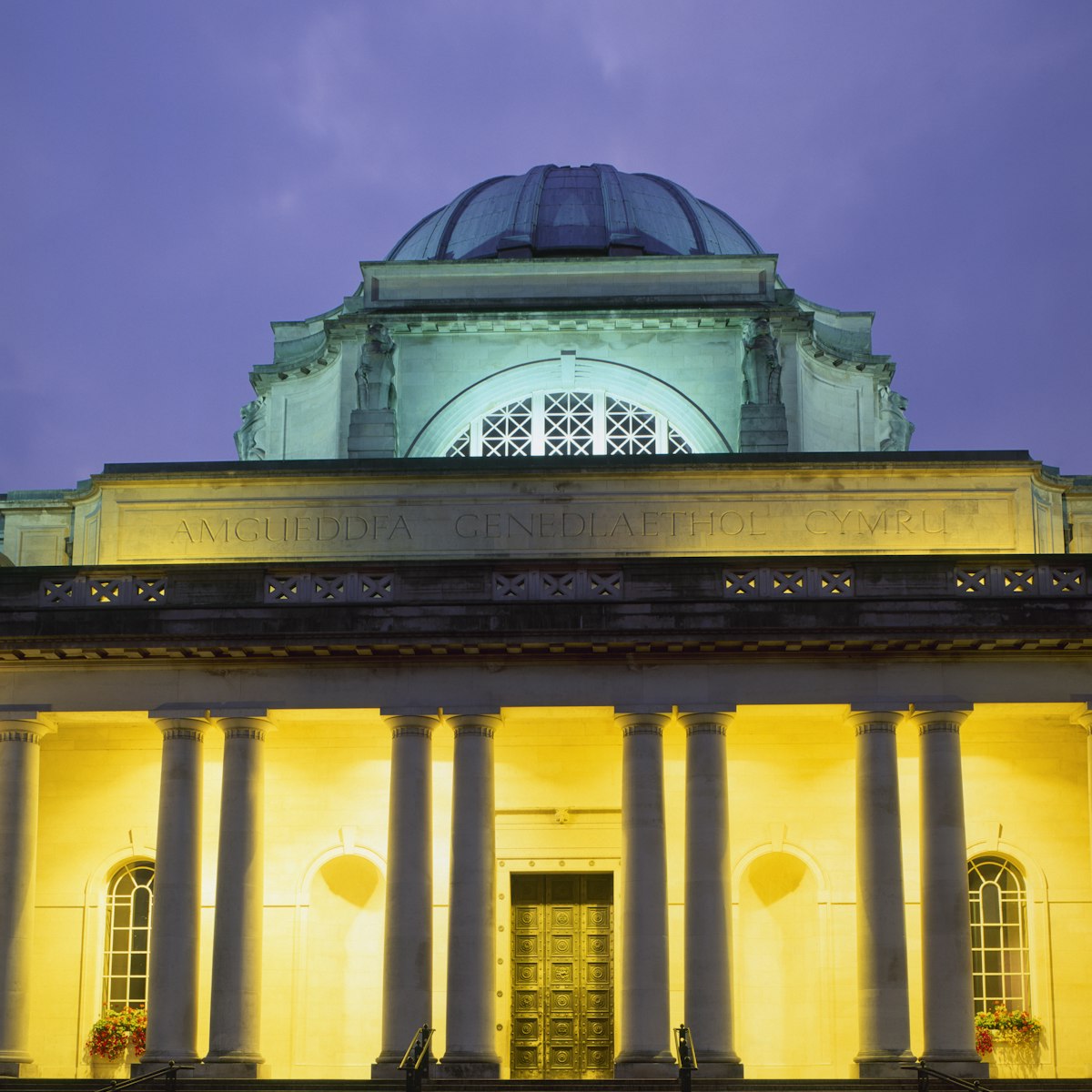
National Museum Cardiff
24.19 MILES
Devoted mainly to natural history and art, this grand neoclassical building is the centrepiece of the seven institutions dotted around the country that…
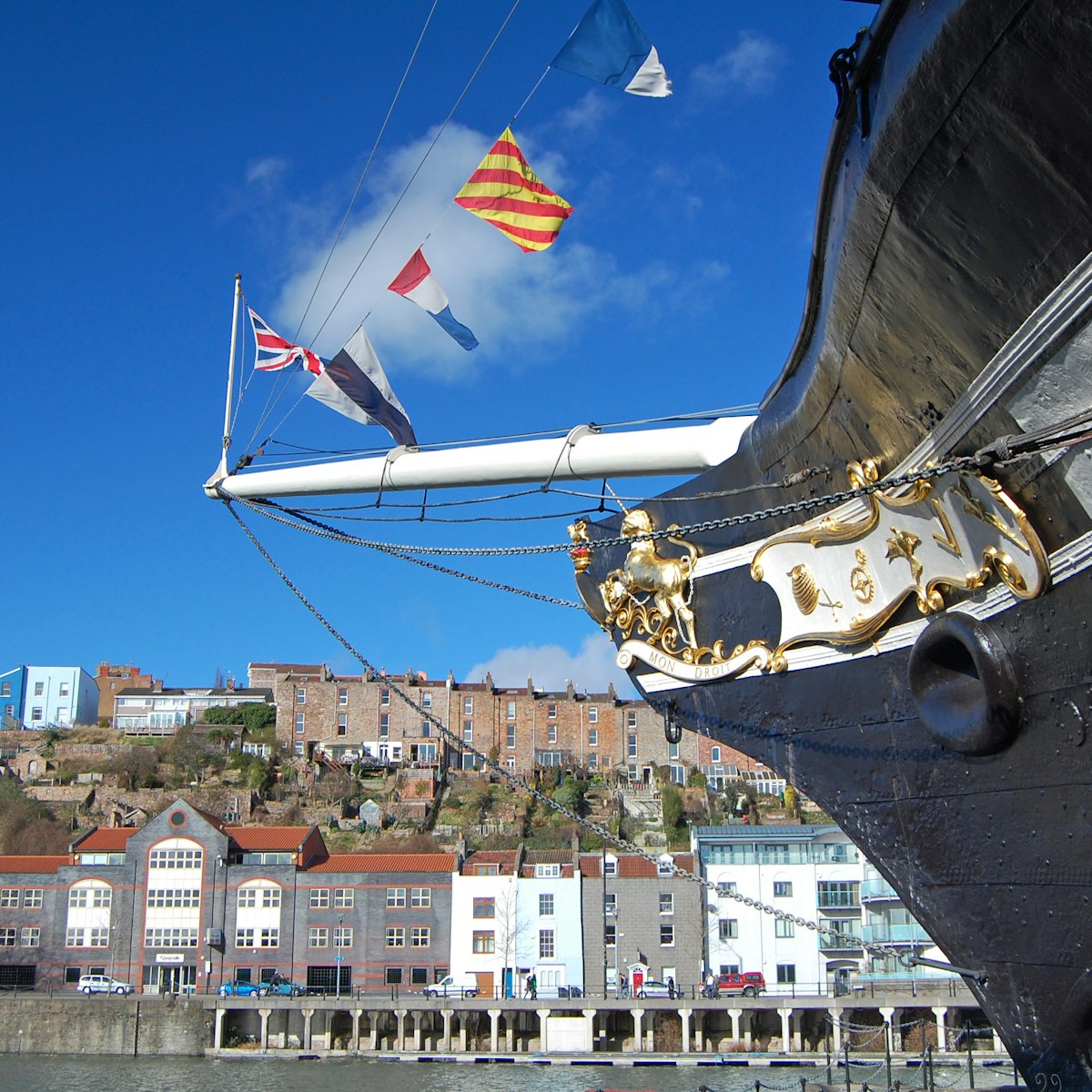
Brunel's SS Great Britain
This mighty, innovative steamship was designed by engineering genius Isambard Kingdom Brunel in 1843. You get to wander the galley, surgeon's quarters and…
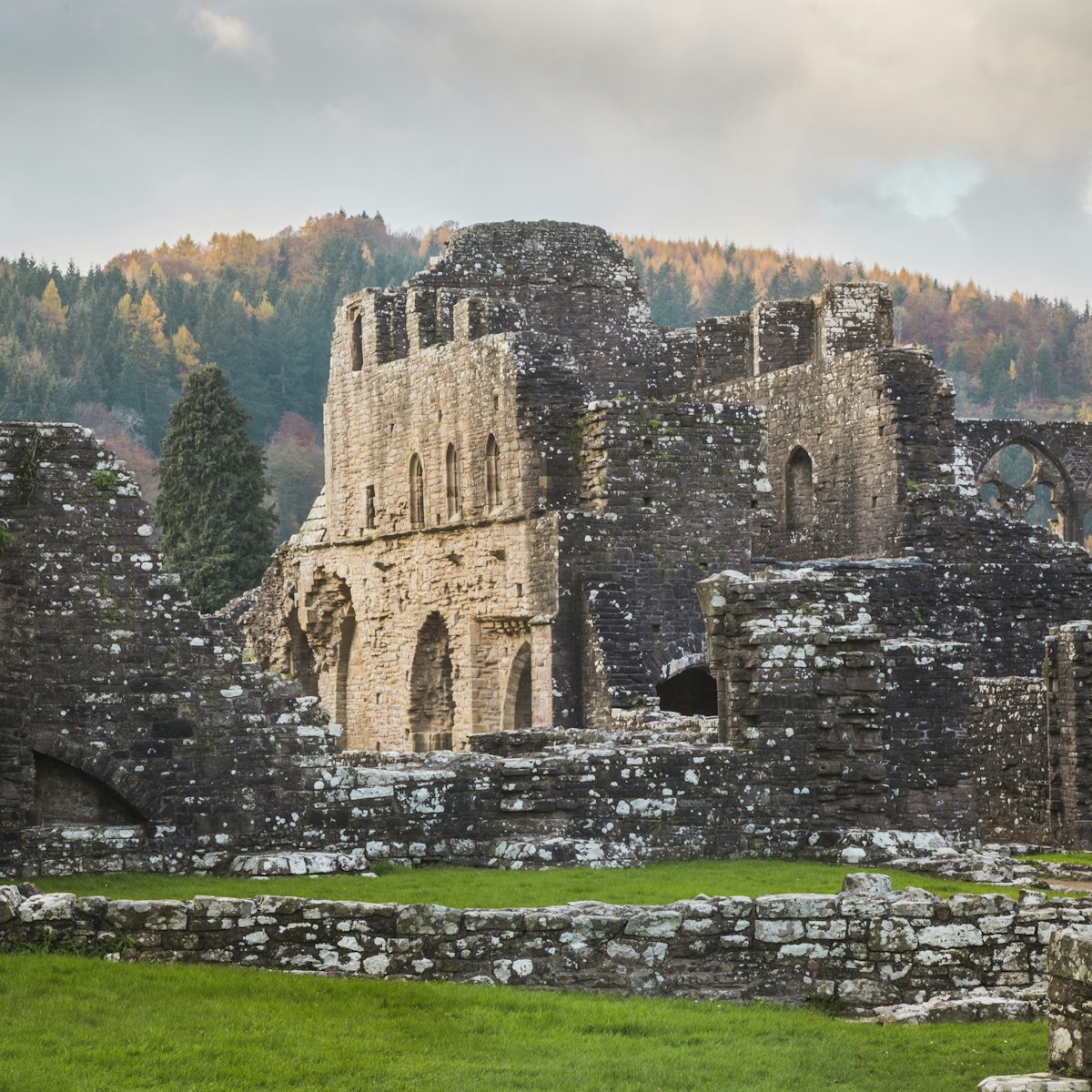
Tintern Abbey
The haunting riverside ruins of this sprawling monastic complex have inspired poets and artists through the centuries, most notably William Wordsworth,…

St Fagans National History Museum
26.75 MILES
Historic buildings from all over the country have been dismantled and re-erected in the semirural surrounds of St Fagans village, 5 miles west of central…
Nearby Southeast Wales attractions
1 . St Thomas the Martyr's Church
Positioned by the Monnow Bridge, sweet little St Thomas still retains some original features from its founding in around 1180. Inside there's a…
2 . Monnow Bridge
Monmouth's main drag, such that it is, starts at car-free Monnow Bridge, the UK's only complete example of a medieval fortified bridge. It was built in…
3 . Monmouth Castle
All that remains of Monmouth Castle is a scant section of wall that once enclosed the great hall and the adjoining tower. Despite being the birthplace of…
4 . Castle & Regimental Museum
Inside Great Castle House, this volunteer-run regimental museum is a labour of love squeezed into a cupboard-sized space. It traces the history of the…
5 . Shire Hall
Fronting Agincourt Sq at the north end of Monnow St, this handsome Georgian building was built in 1724 to house sittings of the assizes court. It was here…
6 . Nelson Museum & Local History Centre
Admiral Horatio Nelson visited Monmouth twice in 1802, officially en route to inspect Pembrokeshire forests for ship timber, though it may have had more…
7 . St Mary's Catholic Church
In 1793, after the official suppression of the faith was relaxed, St Mary's was the first new Catholic church to be opened in Wales. Even then it needed…
8 . Ysgyryd Fawr
Of the glacially sculpted hills that surround Abergavenny, Skirrid (486m) is the most dramatic looking and has a history to match. A cleft in the rock…
- Skip to content
- Skip to footer
Exploring Castles
Raglan Castle: Grand Welsh Ruins And Forgotten Majesty
One thing’s for certain: you can’t miss Raglan Castle.
If you’re coming by car or coach, the castle ruins loom over the A40, one of the trunk-roads connecting the Welsh towns of Abergavenny and Chepstow with the borders of England.
Even today, the ruined castle evokes some of the magnificence and grandeur of its heyday – back in the c17th.
Raglan has a rather checkered history – it started life, in late Medieval times, as a real fortified castle. However, being built during a peaceful period in the English/Welsh border wars, it didn’t see much military action. As a result, it evolved into a breathtakingly beautiful Tudor manor-house.
Then, ironically enough, the English Civil War came – and the grand fortified manor of Raglan was at the front-lines of a lengthy siege and armoured bombardment. The castle sustained significant damage in the war – and was ‘slighted’ (intentionally destroyed) after battle ended.

Nowadays, the vast ruins of Raglan are extremely impressive: but a shadow of the castle’s former glory. I visited in Winter 2012, and here’re some of my photos and impressions from the visit.
Rather than provide an extensive history, I’m going to focus on three sections of the castle: the Great Tower, the Gatehouse, and the Tudor Oriel Window. I’ll use these three parts of the castle to illustrate three crucial periods in Raglan’s history.
The Three Ages of Raglan Castle
The ruins of Raglan are quite vast, although it isn’t truly a ‘medieval’ castle. Builders laid some of the original fortifications back in late Medieval times, but the majority of the castle was built in the Early Modern period – intended as a grand country mansion.

As a result, different segments of Raglan were built at different times, and this is quite evident as you approach the castle. After you proceed through the entrance kiosk and shop, two elements at the front of the ruins vie for your attention.
The first of these is the Great Tower (or Keep); and the second is the highly impressive Gatehouse (flanked with hexagonal towers, and easily the most photographed part of the castle).

The Great Tower would once have been the crowning glory of Raglan Castle: and it’s a good spot to first focus your attention.
The Military Might of Raglan’s Great Tower
Looking at the Great Tower today, what you’ll see is a more-or-less four storey, grand circular tower; which is surrounded by a murky-green, shield-shaped moat. Today, one entire side of the tower is destroyed; giving you a glimpse of the layers of rooms and chambers once held inside.

The Great Tower and moat stand alone outside the castle – like a sentinel guarding a palace. To reach the Tower, access today is via a modern wooden bridge from the Eastern Gate to the main ruins – but c15th visitors would have used a bascule drawbridge – a design infrequently seen in Britain.
It’s easy to see, then, that the Great Tower represents the strongest and most secure part of Raglan – and, chronologically, it was one of the original elements, built back in about 1435.

There’s some conjecture if the Tower was built upon an existing Motte and Bailey earthworks – a modern fortification of an existing stronghold – or if the location was plucked from an architect’s imagination. Either way, the Tower demonstrates everything that was needed in a Medieval fortification: a self-contained assembly of living rooms; kitchen and hospitality quarters; wrapped in a protective apron wall and moat, and studded with arrow-loops for defence.
Evidently, the more modern segments of Raglan Castle mushroomed around the Great Tower, but the Tower’s strength and purpose remained intact throughout its existence. Successive owners – such as Sir William Herbert – could effectively move into the castle and ‘pull up the drawbridge’ if they wanted peace and quiet.

The sheer height of the tower – in its heyday, it measured five stories high (nowadays, it’s three-and-a-bit) – granted Raglan a touch of prestige and a defensive advantage. The tower could be seen (and was a vantage point) across vast swathes of the Welsh countryside – and, today, the views are still jaw-dropping.
The downfall of the Great Tower came during the English Civil War. The Tower was bombarded extensively from one side; and then, when Raglan fell to the Parliamentarians, the forces attempted to destroy it to prevent future Royalist use. Workers managed to hack off the upper layers with pickaxes; but the tower was stronger than they, and so ended up entirely undermining the foundations – leading the collapse you see today.
The Beginnings of Grandeur: The Importance of Raglan’s Gatehouse
The second significant period in Raglan’s history is exemplified by the Gatehouse. The Gatehouse is easily the most photographed spot of Raglan Castle – and that’s certainly because those hexagonal towers and pointy machilations (battlements) have a story-book quality.

The attractive grey brick paneling is somewhat unusual – the pale, grey-yellow sandstone is a graceful contrast to the blood-red brick used elsewhere in the building. The facade of the tower is almost tiled in these bricks, and the result is a finish more commonly seen on the continent than in mainland Britain.

Aside from the finish, the Gatehouse design appears defensive, too: the construction includes two portcullises, a drawbridge and numerous arrow-loops; but these features were more likely to demonstrate strength than to be used in battle. That’s because the Gatehouse was built in 1462 – during the third wave of Raglan’s construction, well after any military threat had subsided.
During 1460 to 1470, Raglan castle became reborn as a noble castle-mansion. As well as the Gatehouse, Sir William Herbert added the main features of the castle – elements of the large Cobbled Court behind the main Gatehouse; the incredible Fountain court to its left; and the chapel and parlour rooms.

Whereas the Cobbled Court was a focus for everyday domestic life (housing the kitchen and buttery, for example), the adjacent Fountain Court acted as the centre for prestige and entertainment – the state apartments, chapel and later library were build around this focus of privileged life.
Evidently, the purpose of the castle had shifted dramatically – from military outpost to noble home. And the design of the Gatehouse helped fulfil this aim. It was the architecture of grand pretensions – a breath-taking entrance to the building, highlighting the social importance of Raglan’s owners.
The Third (and final!) Age of Raglan: The Tudor Oriel Window
There’s one final part of Raglan Castle which I’d like to focus upon: the sad grandeur of the mighty Tudor Oriel Window, which would have been one of the most magnificent features of the c16th and c17th castle.

If the foundations of grandeur were laid in the 1460s, the flourishing touches were added in the from 1549 onwards. And, although it requires a bit of imagination today, the Tudor Oriel Window would have been one of the most majestic features of the castle – a grand stained glass masterpiece allowing dappled light to flood into the newly-built Hall.

During the c16th, Raglan Castle was owned by the Earls of Worcester – and they lavished money to create a truly grand country home. The Earls created the grand Hall, connecting the Cobblestone Court with the Fountain Court; and an extremely grand Long Gallery – an upstairs corridor used to demonstrate the power and prestige of the noble family.
Outside the castle, they landscaped a series of water-gardens and even a bowling lawn: completing the image of a perfect country house.

The Tudor Oriel Window, towards the end of the new, hammer-beamed hall, was a particularly lofty achievement. This delicate window would have been filled with the finest stained glass and would have allowed light to flood onto the raised stage (dais) at the end of the hallway. This dais would have been reserved for the most important guests at dinner.
This window has a particularly poignant significance, too. Raglan Castle was besieged during the English Civil War, as the Earl of Worcester was a staunch Royalist. He picked the losing side, and the Parliamentarians laid siege to the castle in 1646.

It’s said that the noble family watched from this window in terror as the final defences of the castle fell, and Raglan was besieged.
The result of the civil war was the deliberate destruction (slighting) of the castle – which saw hundreds of precious manuscripts, paintings and antiques being engulfed in flames. It also reduced the castle to the ruins we see today.
Visiting Raglan Castle Today: Tips and Advice
If you’d like to visit Raglan Castle today, you’ll almost certainly need your own transport – the castle’s located on a minor slip-road leading off from the busy A40.
The castle is presently managed by Cadw – the Welsh heritage conservation body. They’ve built a sizeable gift shop at the castle gates, and there’re also toilets located in the castle.

There’s a working farm next door to the castle, which is home to an excellent tea-room – the Raglan Castle Cafe. The cafe’s been nicely done up and a balcony with outside-seating affords beautiful views across the nearby farmland. Don’t miss having tea and a welsh-cake here!
If you’d like to stay nearby, your best bet is to stop in Abergavenny – a very pretty Welsh town that’s about 20m drive. Alternatively, you’re less than an hour from the bright lights of Cardiff.
Enjoying Exploring Castles? Then Buy My Book!

Love discovering the secrets of English castles?
Want to own a beautiful piece of English history?
My book, Exploring English Castles , is filled with stories and more than 200 spectacular photos.
It's a gorgeous book for anyone interested in English castles.
Share with friends!
Raglan Castle
Raglan Castle is one of the finest late medieval buildings in the British Isles and, although now ruined, it remains a striking presence in the landscape of south-east Wales.
Where is Raglan Castle?
Raglan Castle is located just north of the village of Raglan in the county of Monmouthshire, off the A40 between Monmouth and Abergavenny . For details on how to visit, see Cadw’s webpage .
When was Raglan Castle built?
Much of what remains at Raglan dates from the 15th century, the period of the Wars of the Roses and the rise of the Tudor dynasty , though there is believed to have been an earlier, Norman motte-and-bailey castle on the site.
The hexagonal Great Tower is the most impressive of the buildings from this period, dominating the two courtyards of the castle.

The Great Tower. An impressive self-contained fortress-cum-residence which lies outside the circuit of the castle's curtain walls. Image: Cadw (Crown copyright).
The castle as it stands today was built in three main phases.
The first phase of building in the fifteenth century included the hexagonal, five-storey Great Tower, which was surrounded by a moat and, when it was originally built, could only be accessed from inside the castle via a drawbridge.
The second phase, built by Sir William Herbert , the first Earl of Pembroke, added sumptuous apartments. Finally, the castle was transformed into a mansion by the Earls of Worcester in the 16th century.
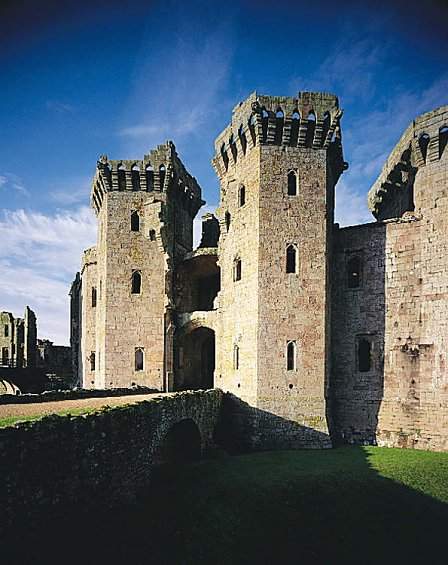
The Great Gatehouse, Raglan. Built between 1460 and 1469 the gatehouse was designed to impress and intimidate visitors with its arrays of gun loops, machicolations, portcullises and doors. Image: Cadw (Crown copyright).
Who built Raglan Castle?
There is some controversy over who built the first phase of the castle; it was built either by William Herbert, the first Earl of Pembroke, or his father, William ap Thomas, who had purchased Raglan in 1432.
William Herbert was a key figure in the politics of the late 15th century. During the Wars of the Roses he supported Edward IV .
The reward for his loyalty was considerable, providing him with the title Earl of Pembroke, and sufficient resources to convert Raglan into a palace-fortress.
Earl William's success was, however, to be short-lived. In 1469 he was captured by Lancastrian supporters at the Battle of Edgecote and put to death.
The Herberts retained control of Raglan until 1492 when it passed to the Somerset family. William Somerset , the third Earl of Worcester (1526–1589), was the first of his family to significantly alter the castle's buildings.
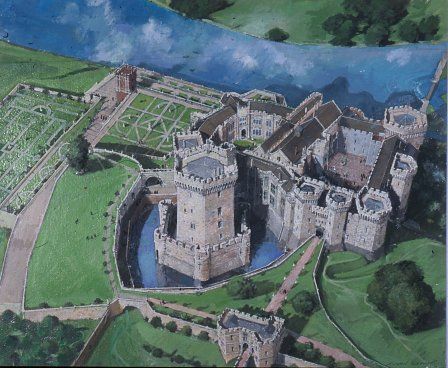
Reconstruction of Raglan Castle, about 1620, showing the formal gardens that existed in the castle's heyday. Image: Cadw (Crown copyright).
He focused his efforts on upgrading the quality of the hall and service ranges to meet the social expectations of his time. He also established the gardens, including a series of walled terraces, an artificial lake, a fountain, flower beds and herb gardens.
The Herberts retained control of Raglan until 1492, when it passed to the Somerset family. William Somerset, the third Earl of Worcester (1526–1589), was the first of his family to significantly alter the castle's buildings.
The third Earl focused his efforts on upgrading the quality of the hall and service ranges to meet the social expectations of his time. He also established the gardens, including a series of walled terraces, an artificial lake, a fountain, flower beds and herb gardens.
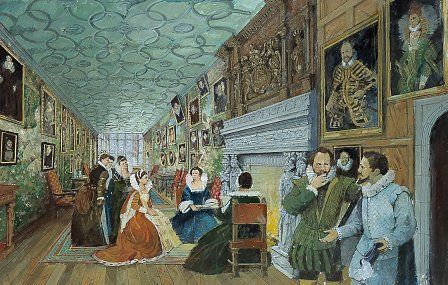
Reconstruction of life at Raglan Castle in the 16th century, at the time of the Third Earl of Worcester. Image: Cadw (Crown copyright).
What happened to Raglan Castle?
By the middle of the 17th century, Raglan's fortunes were at their peak. It had achieved a level of sophistication and opulence that only the greatest country houses could match. However, the English Civil War was to change all this.
In 1642, the fifth Earl of Worcester declared his support for the Royalist cause, offering considerable financial support to King Charles I . This was to make Raglan a target for Parliamentarian forces, which subsequently besieged the castle in June 1646. Its defenders held out during the summer, but by mid-August the Parliamentarians had moved their siege works to within sixty yards of the castle. Its defenders surrendered on 19 August.
After it was captured, the castle was deliberately made useless for defensive purposes, a process known as ‘slighting’. This is when the gigantic hole was torn through the Great Tower.
In the years that followed Raglan was abandoned and left to decay, becoming a convenient source of building material and a picturesque tourist attraction. Today this decay has been halted and the building conserved through the work of Cadw and its predecessors.
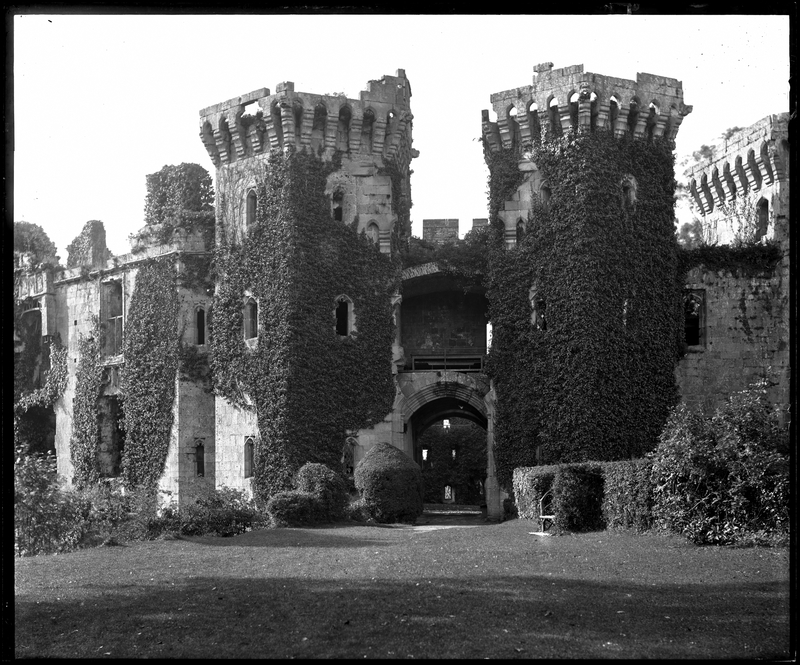
, photographed by Sir Thomas Mansel Franklen (1840–1928)
Who owns Raglan Castle?
Raglan Castle is still owned by the Somerset family, who became Dukes of Beaufort in 1682. In 1938 it was put in the care of the Ministry of Works , and it is now looked after by Cadw .
Which films have used Raglan Castle as a backdrop?
Raglan Castle appeared in Terry Gilliam’s film Time Bandits (1981), where it stood in for an Italian castle under siege in the Napoleonic Wars.
Background reading
- Raglan Castle by J. R. Kenyon. Published by Cadw (2003).
- The decorated floor tiles from Raglan Castle
- Cadw listing
- Coflein listing (Royal Commission of Ancient and Historical Monuments of Wales)
Header image adapted from Raglan Castle by Steve Slater , CC BY 2.0

Raglan Castle

Top ways to experience Raglan Castle and nearby attractions

Most Recent: Reviews ordered by most recent publish date in descending order.
Detailed Reviews: Reviews ordered by recency and descriptiveness of user-identified themes such as waiting time, length of visit, general tips, and location information.
RAGLAN CASTLE: All You Need to Know BEFORE You Go (with Photos)
Raglan Castle (Cadw)
Regions covered:.
- South East Wales
Travel Trade Attraction
Get in touch, found a problem with this page report it here.

Like what you see?
Take a look around, about raglan castle (cadw).
- Car Parking
- Coach Parking
- Disabled Facilities
Tour Details
- Scheduled Tours
- Tailored Tours
Visit Information
- Advanced Booking Required?
Special Rates
- Special Group Rates
- Commission Rates
51.770298, -2.84917951
Before you start....
This site uses animations - these may cause issues for some people and can be turned off.
Terms and Conditions
By using this site, you confirm that you agree and accept our Terms and Conditions .

Sign Up Today
Start your 14 day free trial today
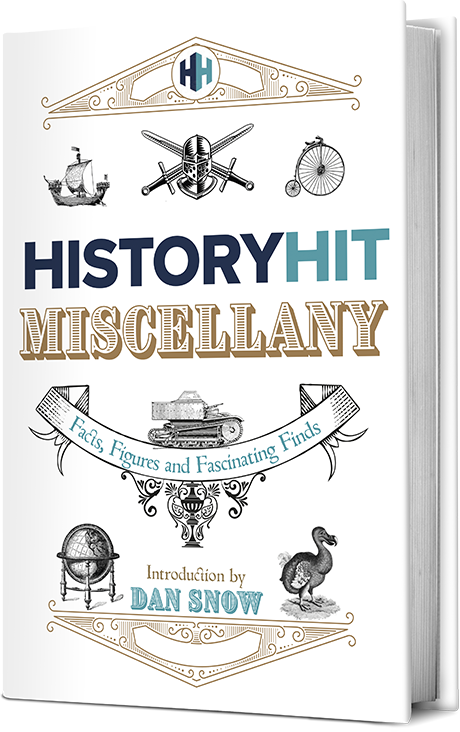
The History Hit Miscellany of Facts, Figures and Fascinating Finds
- United Kingdom
Raglan Castle
Raglan, Wales, United Kingdom
Raglan Castle is the dramatic ruin of a 15th century castle destroyed in the English Civil War.

Antara Bate
04 jun 2021.

About Raglan Castle
Raglan Castle is the dramatic ruin of a 15th century castle built by Welsh nobleman Sir William ap Thomas and completed by his son. The castle met its end during the English Civil War.
Raglan Castle history
Raglan castle is an impressive late medieval building and although now ruined, it remains a striking presence in the landscape of south-east Wales.
Much of what remains at Raglan dates from the 15th century, the period of the Wars of the Roses and the rise of the Tudor dynasty. The Great Tower is the most impressive of the buildings from this period, dominating the two courtyards of the castle.
Sir William ap Thomas was a veteran of the French wars and started work on the structure around 1435 including overseeing the construction of the Great Tower.
After Sir William’s death in 1461, his son William Herbert became Baron Herbert of Raglan and embarked on an ambitious building programme to reflect his new status. He developed suites of accommodation around the Fountain Court, built the Pitched Stone Court, and constructed the gatehouse to both impress and intimidate visitors to the castle.
Sir William Herbert was a key figure in the politics of the late 15th century. During the War of the Roses he supported Edward IV. The reward for his loyalty was considerable, providing him with the title Earl of Pembroke, and sufficient resources to convert Raglan into a palace like fortress.
In 1469, Sir William Herbert was captured by Lancastrian supporters at the Battle of Edgecote and put to death. At this time the work was unfinished.
Raglan underwent its final transformation when the castle passed to the Somersets, earls of Worcester. William Somerset, the third Earl of Worcester, remodelled the hall range, built a long gallery and extended the Pitched Stone Court. He also created a garden with long walled terraces and a lake.
The castle was besieged for ten weeks in 1646 by parliamentarian troops and ultimately destroyed. In the years that followed Raglan was abandoned and left to decay.
Raglan Castle today
Today the decay has been halted and the building conserved through the work of Cadw and its predecessors, who have taken care of the castle since 1938.
The beauty of Raglan Castle can be seen for miles around the countryside. The Great Tower serves as the predominant feature of the castle. It is surrounded by a moat, which is crossable by a bridge from the main castle
Getting to Raglan Castle
To get to Raglan Castle by car go via the A40 and Raglan is signposted. The nearest train station is Newport. The site is also accessible by bus and regional bike routes.
Featured In

Castles in Wales
Discover Wales' rugged and scenic castles, including Beaumaris, Harlech Castle, and more.

Related Articles

Can You Spot the Secret Medieval Graffiti Demon?

Who Were the Anglo Saxons?
Watch and listen.

The Princes in the Tower: The Mystery of the Brothers York

Meals, Money & The Middle Ages: Eels
You may also like.
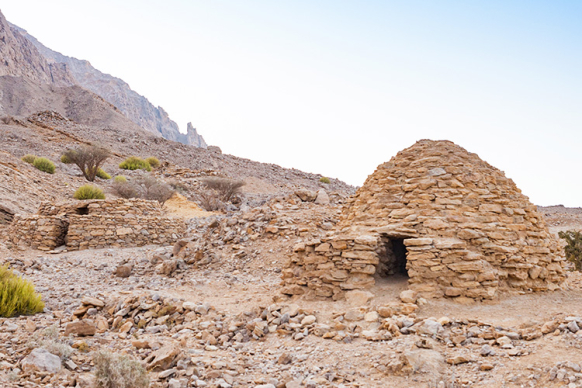
The 10 Best Bronze Age Sites to Visit in the World
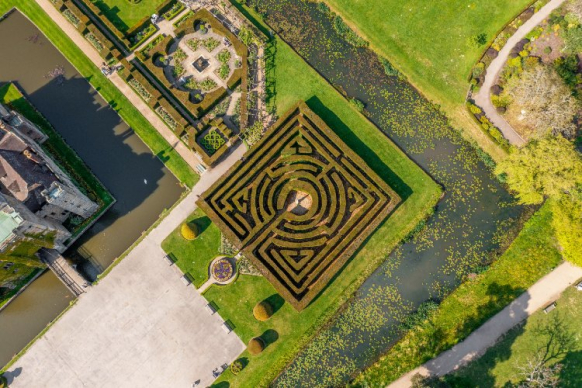
5 Historic Mazes to Explore in England
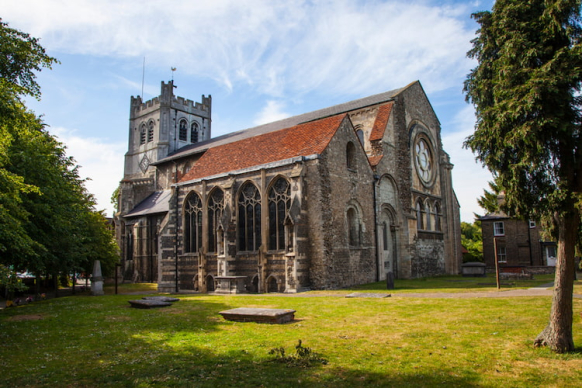
Explore the Key Sites of Henry VIII’s Life and Reign
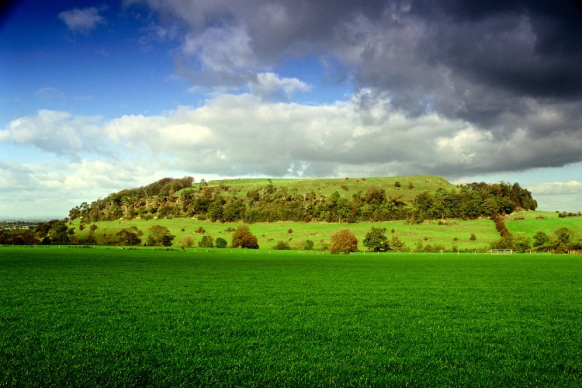
5 of the Best Hillforts in England
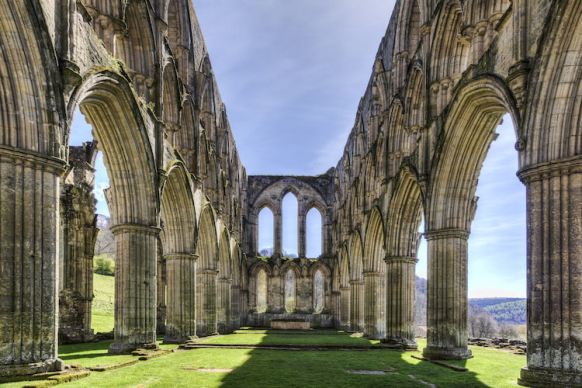
10 British Churches Ruined During the Dissolution of the Monasteries
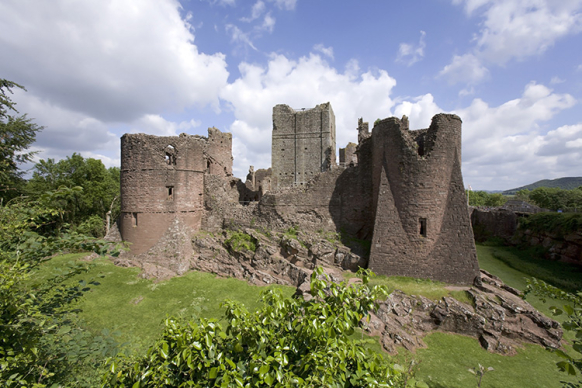
The Best English Civil War Sites and Battlefields
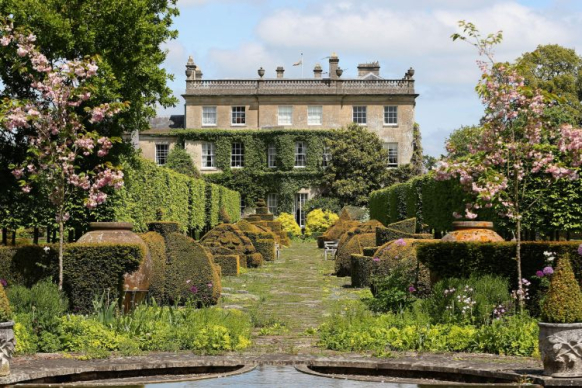
11 British Royal Residences
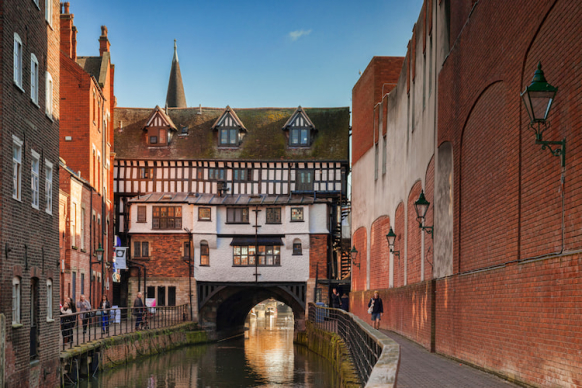
10 Must-See Medieval Landmarks in England
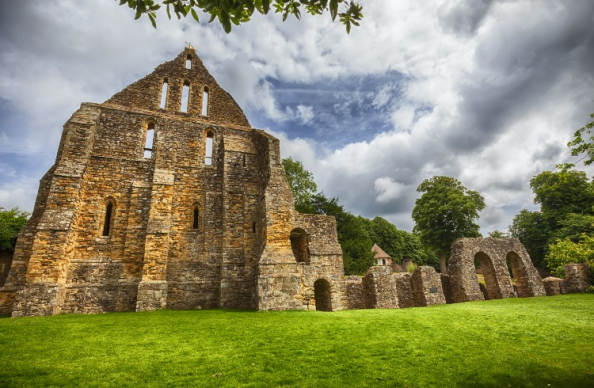
10 of the Best Norman Sites in Britain
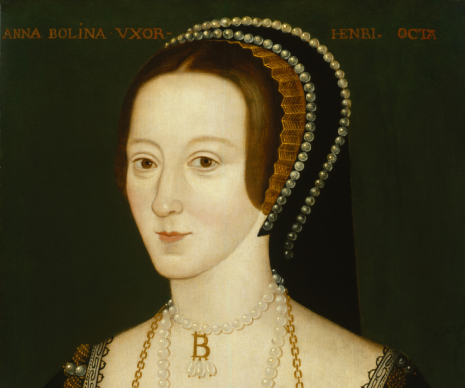
10 Historic Sites Associated with Anne Boleyn
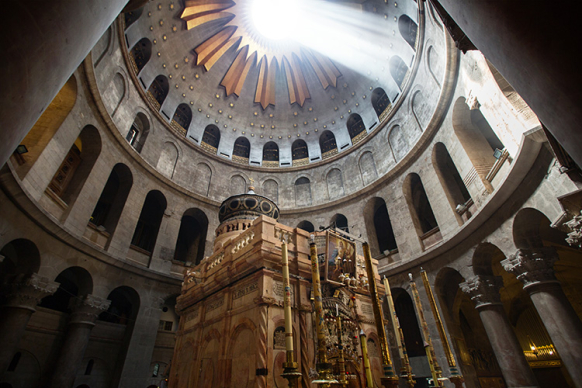
10 Key Crusader Ruins and Monuments
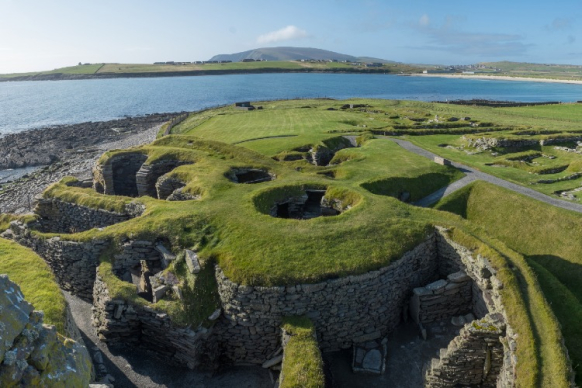
Viking Sites in Scotland: 5 Areas with Nordic History
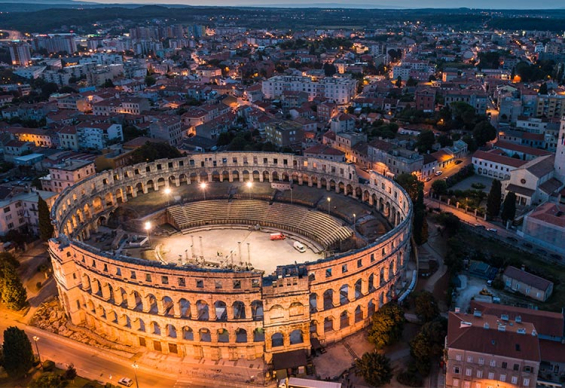
10 Historic Sites You Should Not Miss in 2023
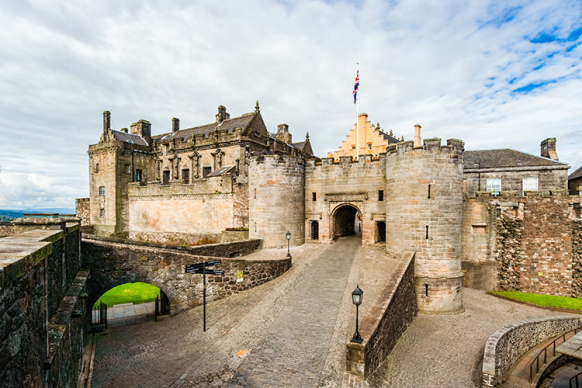
Historic Sites Associated with Mary Queen of Scots

Raglan Castle – Medieval Glory of Wales (History & Travel Tips)
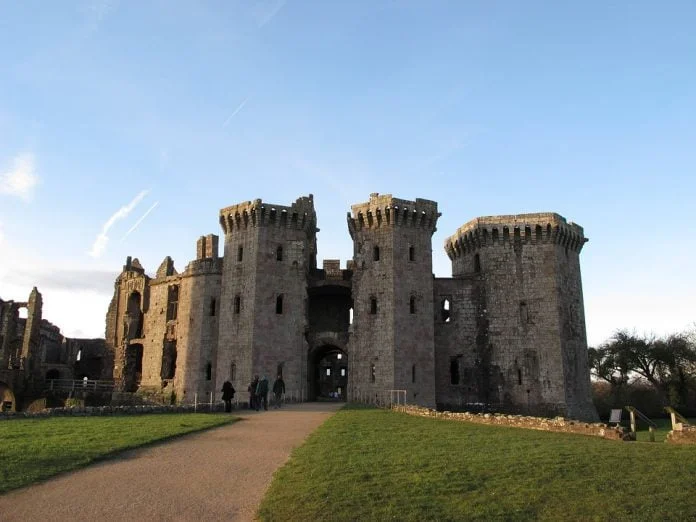
A wonderful tourist destination in the South of Wales , Raglan Castle perfectly encapsulates late medieval European culture in all its glory. Its magnificent structure resides in the midst of water gardens, parks, and terraces, and is a must-visit when you’re in the area. Here’s everything you need to know about it:
Table of Contents
- 1.0.1 Where is Raglan Castle Located?
- 1.0.2 When was Raglan Castle Built? Who Build It?
- 1.0.3 When is The Best Time to Visit the Castle?
- 1.0.4 What Other Monuments are Located Nearby?
- 2.1 Origins
- 2.2 The conception of the Manor House
- 2.3 15th & 16th Centuries
- 2.4 Continuing the Herbert Inheritance
- 2.5 17th Century & Onwards
- 2.6 Strengthening of the Defenses
- 2.7 Somersets Again
- 3 Current Times
- 4 Interesting Raglan Castle Facts
- 5.1 How to get to Raglan Castle?
- 5.2 Ticket Prices, Visiting Hours & Travel Tips
- 5.3.1 Up to Date Information
- 5.3.2 Some words of advice and tips:
- 5.3.3 Quick Video Tour of The Main Raglan Castle Areas
.ugb-cc08ac3 .ugb-blockquote__quote{fill:#000000 !important;width:42px !important;height:42px !important}.ugb-cc08ac3 .ugb-blockquote__text{color:#d21e1e} Raglan castle was used as a site to film the fictional Isle of the Blessed for the TV series Merlin (2008).
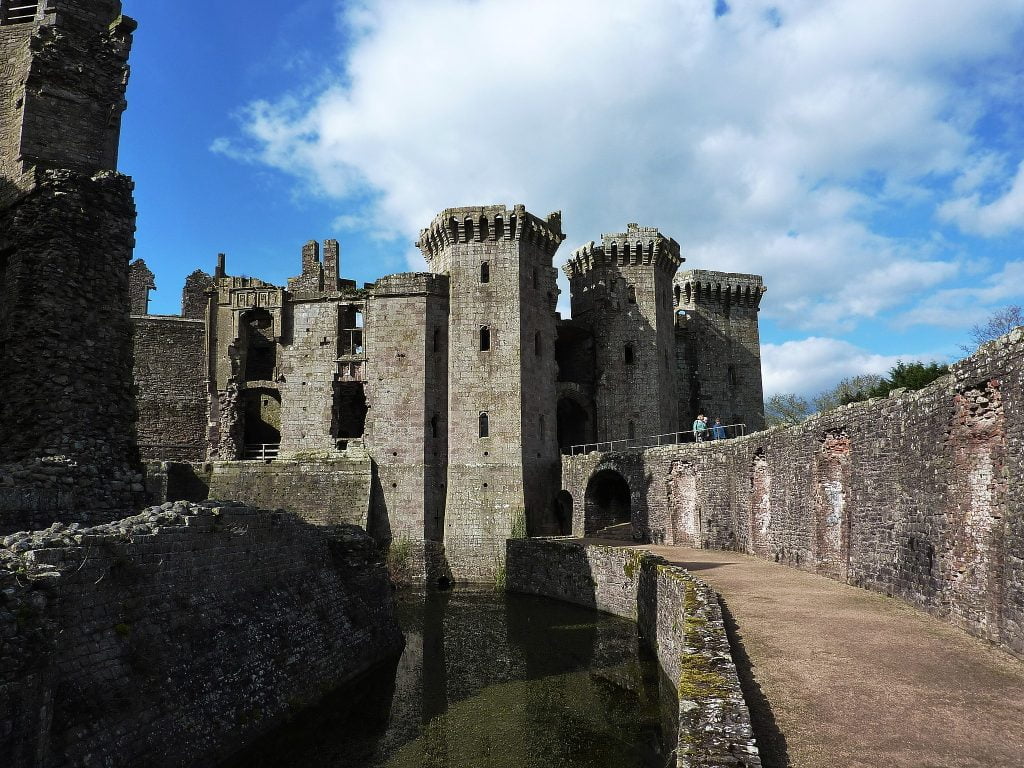
Frequently Asked Questions
Where is raglan castle located.
Raglan Castle is located on the north side of Raglan village in Monmouthshire County in South East Wales.
When was Raglan Castle Built? Who Build It?
The castle was built between the 15th and 17th centuries by the Welsh nobleman Sir William ap Thomas .
When is The Best Time to Visit the Castle?
Although you can visit the castle at any time of the year, we would recommend summertime when the tourist season in Wales is in full swing.
What Other Monuments are Located Nearby?
Other monuments located nearby include Monmouth War Memorial, Dingestow Castle, and Y Fenni Memorials.
FOR HISTORY | BEAUTIFUL IMAGES | INTERESTING FACTS | TRAVEL TIPS
Early History
The castle has its origins in the invasion of Wales by the Normans. After the takeover, the area surrounding the village of Raglan became the property of William FitzOsbern, the Earl of Hereford.
It is believed by historians that a motte-and-bailey structure was laid down on the site during this period in time, as it’s quite a strategic location and the remains of a bailey ditch were discovered in the area.
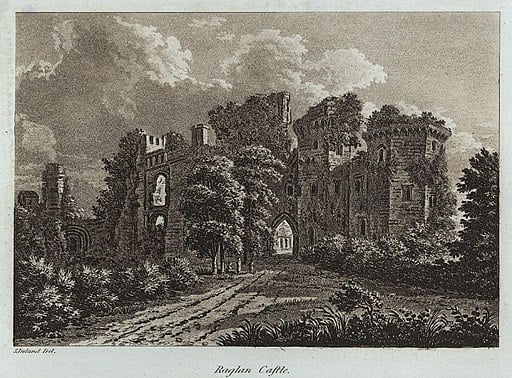
The conception of the Manor House
A Norman noble family known as the Bloet family had custody of the local manor from the late 12th century till the late 14th century. They constructed a manor house on the property and surrounded it with a park. Towards the end of the medieval era, the site was encompassed by two large deer parks, the Home Park and Red Deer Park.

15th & 16th Centuries
It was during this time that the construction of Raglan Castle as we see it today was started by Sir William ap Thomas . He took a wealthy heiress named Elizabeth as his first wife and later married another powerful heiress named Gwaldus. In 1432, William bought the manor of Raglan for 1000 marks, the currency in use at that time. He began the construction work which laid down the basic shape of the castle that we see today.
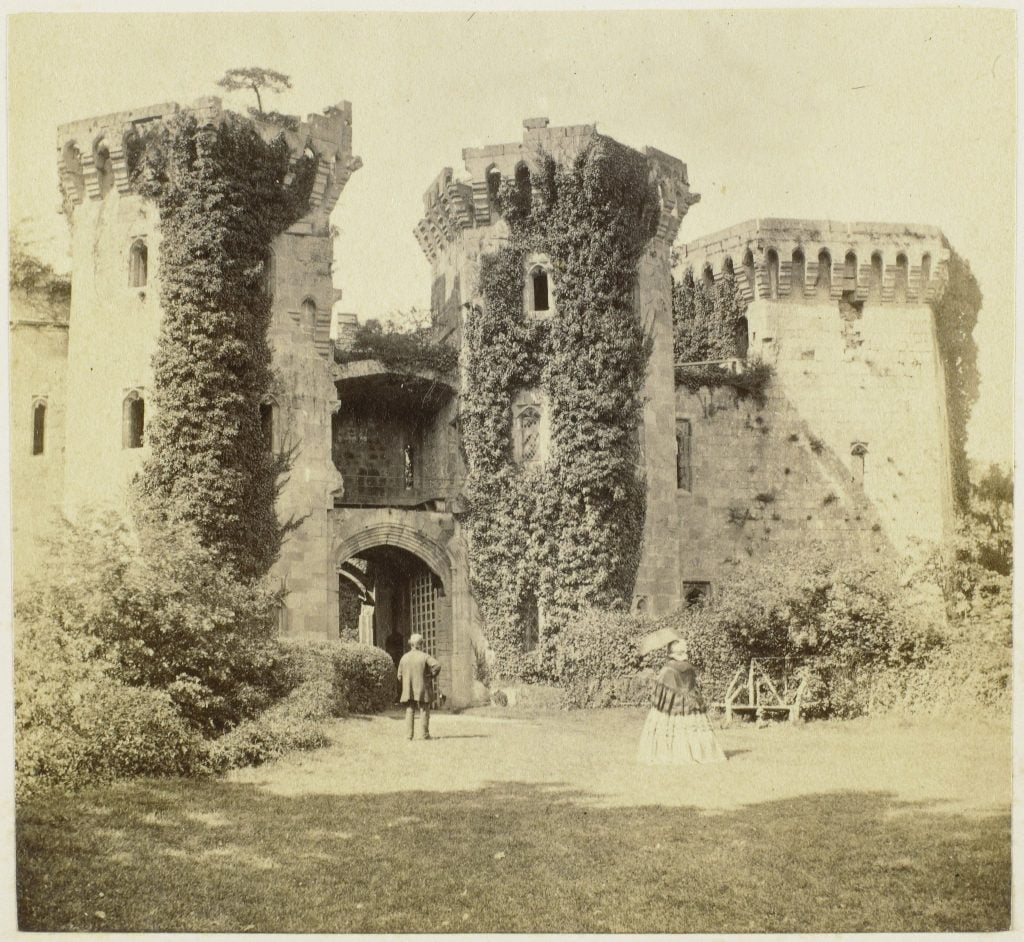
The estate was then inherited by William’s son, William Herbert. He became a prominent figure and supported the House of York during the War of the Roses, fought in the Hundred Years War in France, and made a lot of wealth from the Gascon wine trade. In the 1460s William used his fortune to reconstruct the castle on a larger scale based on Welsh architectural designs.
The parks surrounding the castle in the middle of the wilderness were meant to give off the impression that the inhabitants were cultured people. In the 15th century, the castle also had a lot of orchards and fish ponds surrounding the castle.
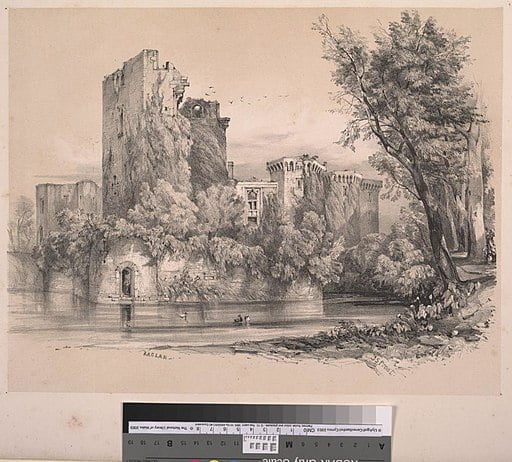
Continuing the Herbert Inheritance
After William Herbert’s execution in 1469, his son, also known as William Herbert, inherited the castle. During his era, the construction halted for a while before resuming in the late 1470s.
The castle was inherited by William Herbert’s daughter Elizabeth in 1492. She had married Sir Charles Somerset, the first Earl of Worcester, hence the castle was passed onto the Somerset family. Charles’ son Henry used lead mined from Tintern Abbey for the construction of the castle. Henry’s son William rebuilt the Pitched Stone Court, added the Long Gallery to it, and developed the gardens.
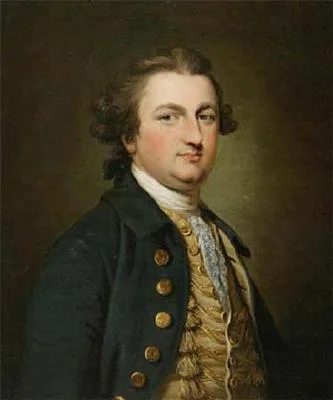
17th Century & Onwards
William Somerset’s son Edward Somerset improved the castle’s interior and exterior in the early 17th century. Henry Somerset inherited the castle in 1628 and led an extravagant life on the property. He developed the entrance route to the castle, adding the Red Gate. His son built a water-commanding machine in the great tower–it is unclear what exactly the machine was.
In 1642 a civil war broke out between the Parliament and the Royalists. Religious tensions between Protestants and Catholics also intensified during the time. A local group attempted to raid the castle during the period but was scared away by the sound of Lord Herbert’s steam engine. After this, the defense structures of the castle were strengthened.
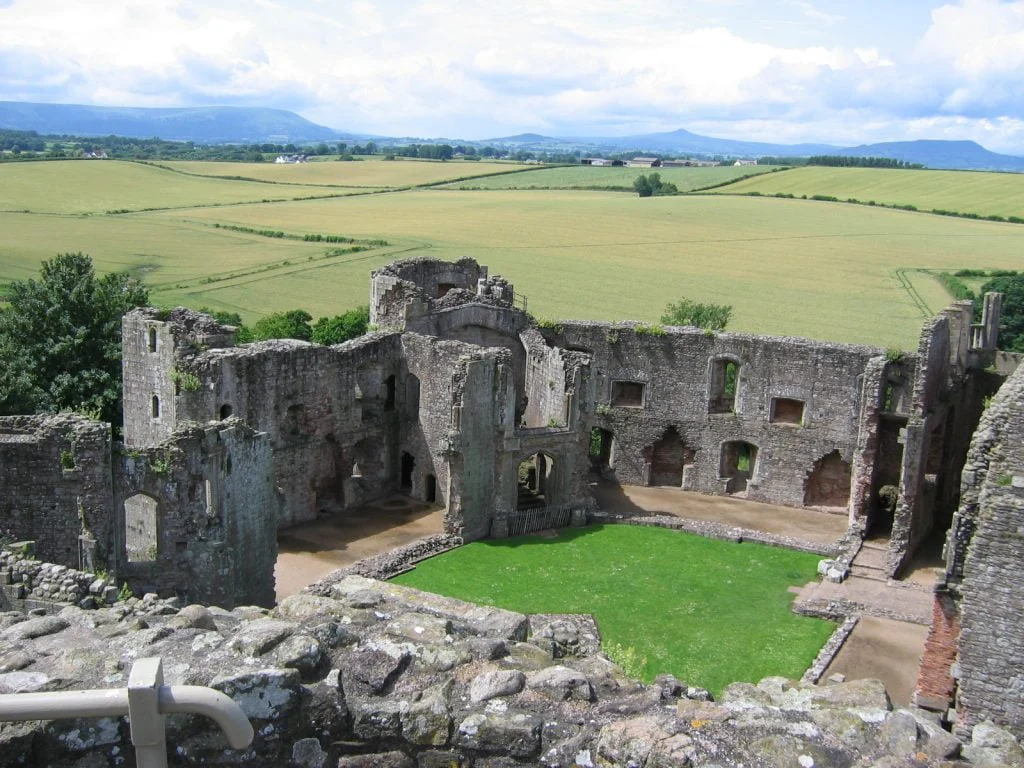
Strengthening of the Defenses
Lord Herbert left the castle to participate in a campaign against Parliament and was captured in Ireland. The castle was strengthened in anticipation of an attack. Siege was laid on the castle in the summer, demanding it to surrender. The castle was finally surrendered on the 19th of August. General Fairfax ordered the castle to be destroyed, but the fortifications turned out to be quite strong–only a few walls were successfully ruined. A lot of the castle’s heritage was stolen or destroyed during this time.
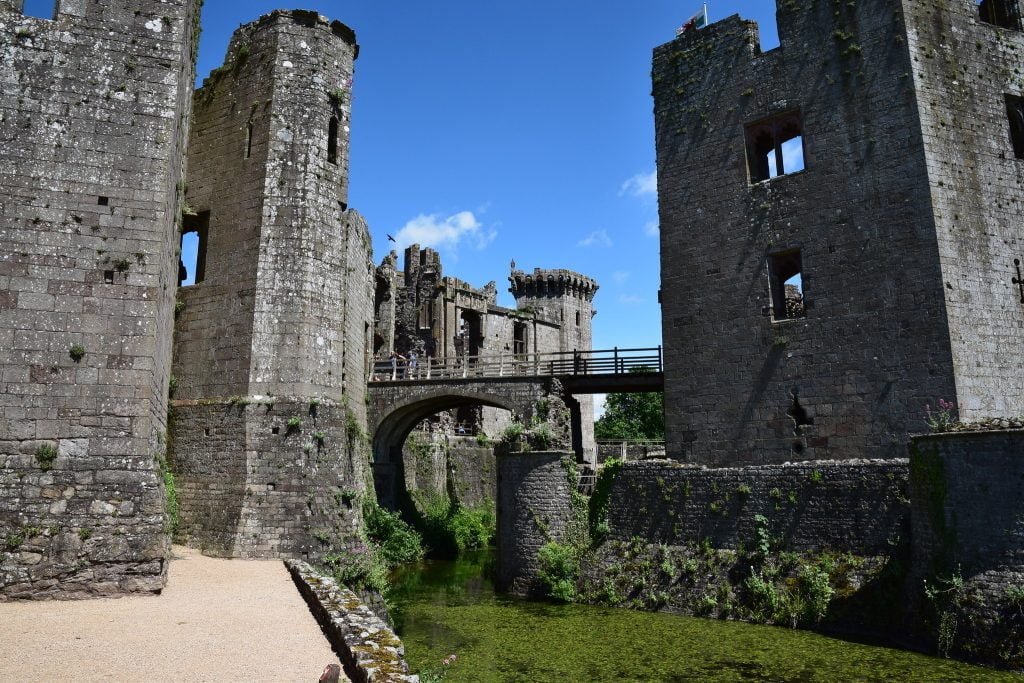
Somersets Again
The restoration of Charles II into power happened shortly after and the castle returned to the ownership of the Somerset family. The castle, however, continued to be neglected and deteriorated until the 5th Duke, Henry Somerset , renovated the place and made it a tourist destination in the late 18th century.
Revisit More Historic Places Below or Read Further
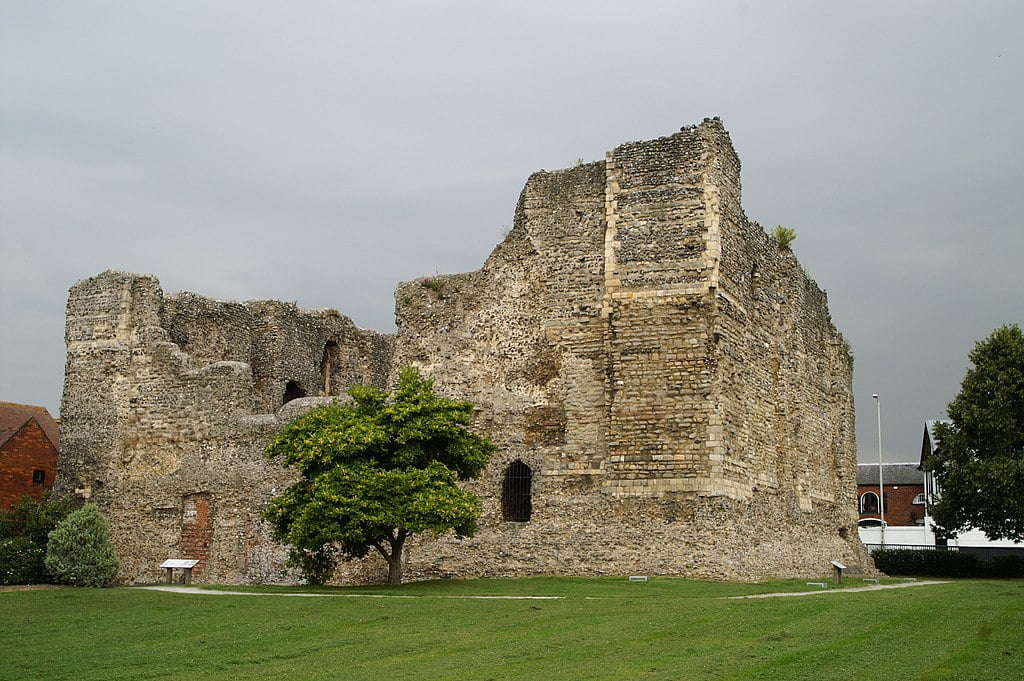
Norman Castles – Beginning of the Medieval Era (History & Travel Tips)
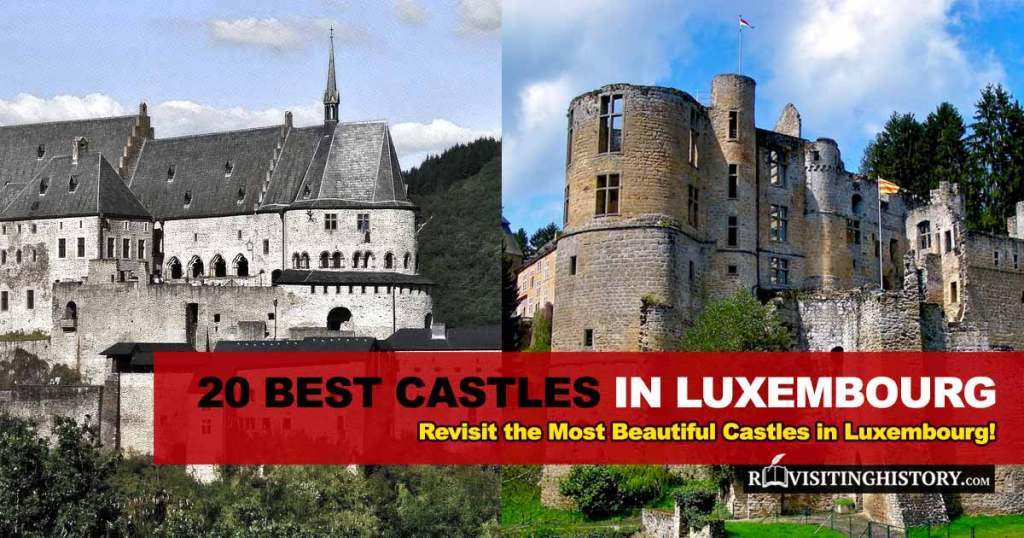
The Best 20 Castles to Visit in Luxembourg (Listed by Popularity)
Current times.
In the 19th century, Raglan Castle was handed over to the Commissioner of Works and has since then been a prominent monument in Wales.
Today, the castle is under the administration of the environment service CADW, and is categorized as a Grade I listed building and Scheduled monument. It is a popular tourist destination, hosting multitudes of visitors every year, and should definitely be on your Welsh itinerary.
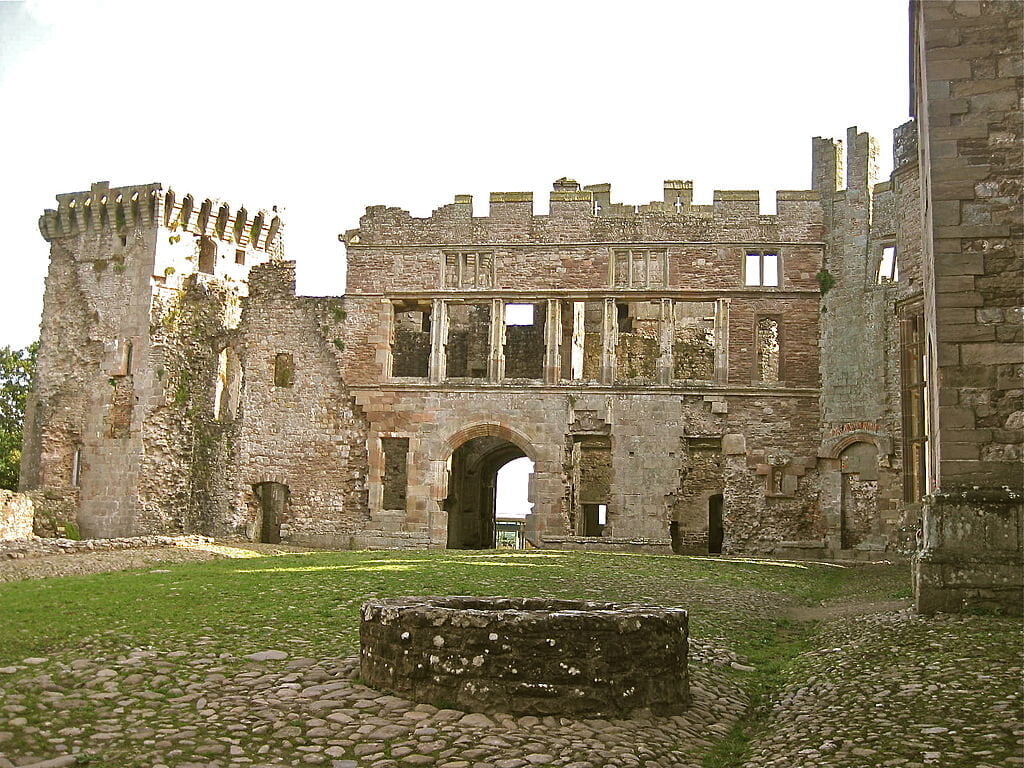
Interesting Raglan Castle Facts
- Raglan castle was used as a site to film the fictional Isle of the Blessed for the TV series Merlin (2008).
- It is believed by architects that the castle’s design was inspired by Southern French architecture.
- Raglan Castle had a magnificent library towards the west of the gatehouse which was famous for its collection of Welsh literature.
Visiting Raglan Castle – Tips and Tricks
Raglan Castle is a prime example of medieval glory in Wales. Its history is an epic saga that will enrapture all history buffs and enthusiasts, along with anyone seeking some cultural entertainment. Here’s everything you need to know about planning a visit:
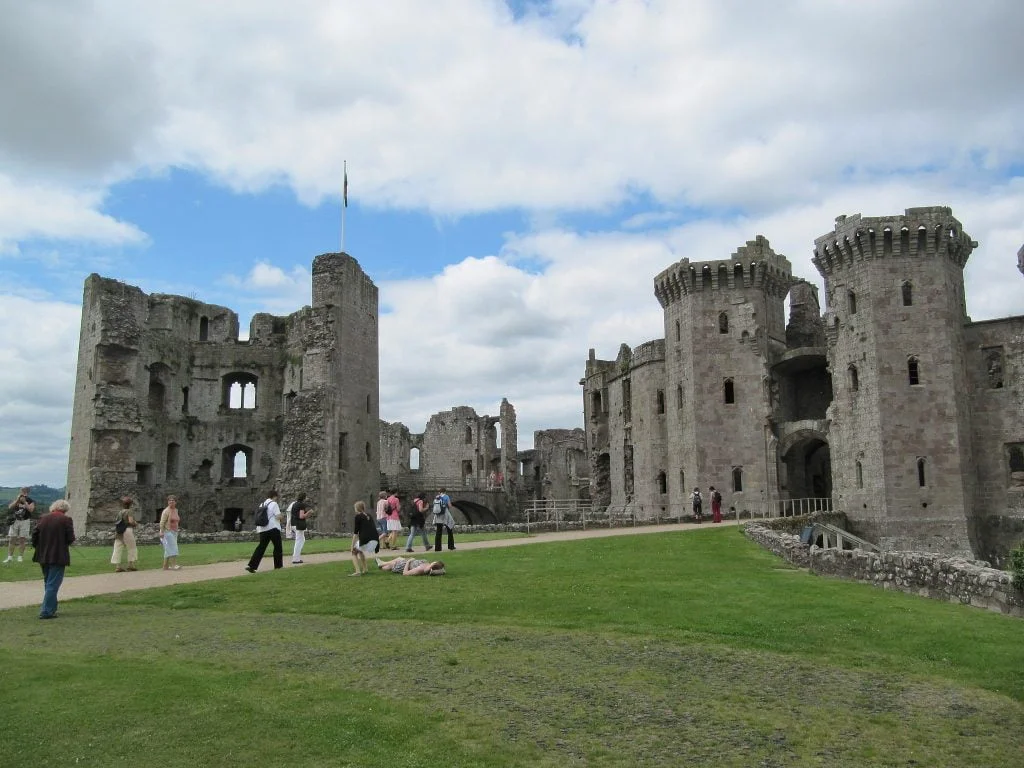
How to get to Raglan Castle?
You can get to Raglan Castle from Cardiff via train, taxi, or car. The most recommended way to get to the castle is by boarding the train at Cardiff Central, getting off at Newport, and then taking a line bus from Newport to Raglan Castle stop. The castle is a 10-minute walk away from the station. The journey by train will take around 2 hours and 11 minutes and cost you about £95 ($130 USD) at a maximum.
By taxi, you can reach the site in 36 minutes, at a rate of around £66 ($90 USD). By car, you can get there in 36 minutes with a fuel cost as low as £5 ($7 USD).
Ticket Prices, Visiting Hours & Travel Tips
The ticket fare for an adult is £6.2 ($9 USD) while for a family it is £21 ($29 USD). For children under 18, armed forces personnel, and veterans it is £4.40 ($6 USD). Admission is free for disabled people and their attendants.
Visiting hours to the castle are 9:30 A.M. to 5:00 P.M. For now, under Covid-19 guidelines, only parts of the castle are accessible but the grounds and outdoor areas can be explored fully!
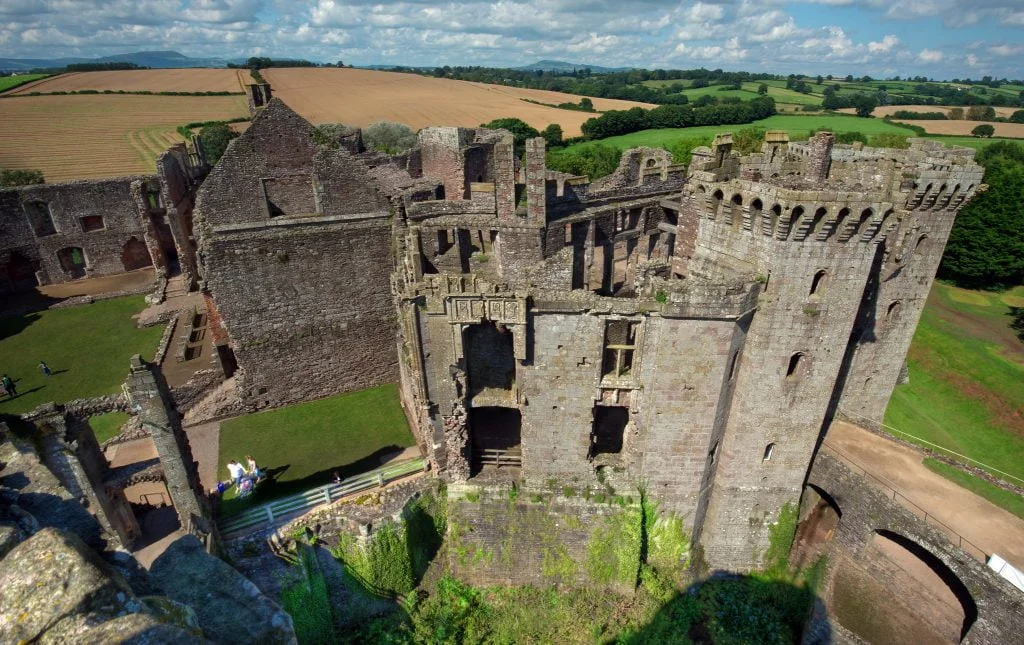
How Long Will It Take to Tour Around?
Raglan Castle can be explored in around 2 hours.
Up to Date Information
For up to date ticket prices and visiting hours visit the official website: https://cadw.gov.wales/visit/places-to-visit/raglan-castle
Some words of advice and tips:
- Carry food along and enjoy a nice picnic in the castle grounds! (There isn’t a cafe on-site so come prepared.)
- Free parking is available outside the castle.
- You would have to climb a lot of stairs throughout your visit, so prepare yourself and carry a bottle of water!
Quick Video Tour of The Main Raglan Castle Areas

REVISIT MORE HISTORY BELOW
The best 7 best castles to visit in the united states, the largest palaces in the world (history & travel tips), biggest castles in the world (history & travel tips), 10 oldest castles in the world | history & travel tips, 9 most impressive castles built on a cliff | travel tips included, the best castles to visit in russia (listed by popularity).
Our mission is to build a strong community and create an online platform which is easy to use, appealing to the eye and shares a different approach to history – one that cannot be simply found on Wikipedia. Our dedicated contributors: writers, photographers, researchers, and filmmakers are the core of this project and this is what makes Revisiting History unique!
Contact us: info[at]revisitinghistory[dot]com
Revisit History
© Copyright - www.revisitinghistory.com. All rights reserved.
- Privacy Policy
- Terms and Conditions
- Copyright Notice

- About Crickhowell
- Current exhibition
- Featured artists
- Buy art online
- Applying to exhibit
- Crickhowell Open Art Competition Entry
- Crickhowell Open Studios
- Past exhibitions
- Patrons & supporters
- Meeting rooms
- Local Produce & Gifts Online
- Visitor information
- Advertise your business here
- Be a Friend to CRiC
- Where to stay
- Where to eat
- Where to shop
- Crickhowell Walking Festival
- Local Services
- Local Government
- Classes & Courses
- Schools & Education
- Clubs & Societies
- Places of Worship
- Venues for Hire
- Health & Care providers
- Virtual tour
- Buy Local Produce & Gifts Online
- Buy Art Online
Raglan Castle

Raglan Castle's picturesque setting, surrounded by a moat, can be appreciated by climbing to the top of the Great Tower. This was amongst the grandest homes in Tudor and Stuart Britain with beautiful gardens , an orchard and a deer park.
Monmouthshire NP15 2BT
Phone: 01291 690228
Open daily 9.30am-6pm, last admission 30 minutes before closing
Adult – £3.50
Family – £10.10*
Senior citizens, students and children under 16 – £3.10
Disabled and companion – Am ddim/Free
*Admits 2 adults and all children under 16
Other things to do...
Farrworld - cave diving training, caving, exploration, underwater survey, photography & caving equipment sales
Llangorse Multi Activity Centre
Llangorse Multi Activity Centre is Wales’ Premier Award Winning Indoor and Outdoor activity centre, set in the stunning Brecon Beacons National Park
Llangorse Multi Activity Centre is Wales’ Premier Award Winning Indoor and Outdoor activity centre, set in the stunning Brecon Beacons National Park, Mid Wales!
Grange Trekking
Pony trekking and riding for experienced riders and beginner
Llanthony Priory
Romantic ruins, painted by JMW Turner amongst many others, in a breathtaking site – well worth the trip
Brecon Beacons Park Society walks
Take a Walk in the Park! As a part of its annual programme of activities the Society organises guided walks in or close to the National Park every Friday, Saturday and Sunday
Talgarth Mill
At the heart of Talgarth, powered by the flow of the River Ellywe, you will find Melin Talgarth Mill, a fully restored, 18th century flour mill
Capel y Ffin Church
A tiny church in a remote spot
Treads & Trails
Mountain bike and walking: guided routes and instruction, adventure camping, treks. Black Mountains, Brecon Beacons and beyond. Contact us to discuss your requirements
Cwm Claisfer Nature Reserve
The wooded reserve of Cwm Claisfer is a mixture of commercial forestry with areas of high nature conservation interest
Craig Cerrig Gleisiad Nature Reserve
A dramatic reserve just north of Storey Arms on the A470 in the heart of the Brecon Beacons
Baker Street Cinema, Abergavenny
New Two Screen Cinema, offering all the latest movies in comfortable surroundings on big, bright screens with Superb Dolby Digital Sound
How to get here...
Registered charity number: 1106479, company limited by guarantee: 4668297 how to get here
The CRiC Centre Beaufort Street Crickhowell Powys NP8 1BN

© CRiC Centre
- Privacy policy
- Accessibility
- The CRiC Centre

Raglan Castle
Travel to raglan castle by train.
Raglan castle, set within glorious countryside, is thought to be the grandest castle ever built by Welshmen.
It was designed to impress as much as to intimidate and under various owners, Raglan was transformed into a magnificent country seat with one of the finest Renaissance gardens in Britain.
This castle is a little further away from a train station than some of the others we have listed , however a short bus ride from Abergavenny station will allow you to see this beautiful castle.
Find out more about Raglan Castle and its history by visiting the Cadw website .
We've teamed up with Cadw to offer our rail users 2 for 1 entry to their historic sites.
With a valid same-day rail ticket, you and a plus one will get 2 entry tickets for the price of 1*, which means you can visit Raglan Castle for less when you take the train.
*Terms and Conditions apply.
- You’ll need to show your Transport for Wales train ticket, valid for a journey taking place on the same day that you visit the Cadw attraction. The 2-for-1 offer is available at Cadw sites where you pay for entry, and you’ll need to redeem it on the same day that you purchase your entry ticket. Your TfW ticket must be valid to the nearest station which serves the attraction you're choosing to visit.
- Please note that this offer will end on 31 May 2024.
- You can view further information on the terms and conditions on the Cadw website .

Discover more destinations


Raglan Castle: A Walk Through Wales’ Medieval Past
If you’re a history buff, architecture enthusiast, or simply someone who loves to explore the past, Raglan Castle should be on top of your must-visit list. Nestled in the heart of Wales, this magnificent castle boasts a rich history dating back to the 15th century.
From its stunning architecture to enchanting tales surrounding its walls, Raglan Castle offers an immersive experience into Wales’ medieval past.
Key Takeaways:
- Discover the historical significance of Raglan Castle in Welsh history
- Admire the unique architectural features that make Raglan Castle a marvel of medieval design
- Uncover the captivating tales and legends surrounding Raglan Castle
- Explore the interior and exterior of the castle, from its grand facade to its beautiful gardens
- Learn about the defensive role of the castle’s keep and its panoramic views
Exploring the History of Raglan Castle
Located in Monmouthshire, Raglan Castle is a medieval fortress that served as the family seat of the Herberts, one of the most prominent families in Welsh history . Built in the 15th century, it was considered one of the grandest castles of its time, boasting impressive defensive features and architectural beauty.
The castle played a significant role in the 17th century during the English Civil War, when it was held by the Royalists and besieged by the Parliamentarians. Its eventual surrender marked the end of the First Civil War.
Throughout its history, Raglan Castle has been associated with notable Welsh figures such as William Herbert, who oversaw much of its construction, and Henry Somerset, who was made the Duke of Beaufort in recognition for his loyalty to the crown during the English Civil War.
Today, Raglan Castle stands as a testament to Welsh history and architecture, attracting visitors from around the world who come to admire its imposing presence and rich history.
The Architectural Marvels of Castle Raglan
One of the most impressive aspects of Castle Raglan is its unique architectural features. Built in the 15th century, the castle is a prime example of the late medieval architectural style. The castle’s design incorporates both French and English elements, resulting in a distinctive and fascinating structure.
One of the most striking architectural features of the castle is its hexagonal great tower. The tower stands at an impressive 98 feet tall and serves as the castle’s main keep. It features a spiral staircase leading to the top, offering panoramic views of the surrounding countryside.
Castle Raglan also features a number of other towers, each with their own unique features. The southeast tower, for example, boasts a projecting turret that serves as a lookout point. The southwest tower, meanwhile, features a more traditional square shape.
The castle’s inner courtyard is another architectural wonder. The courtyard is surrounded by the castle’s living quarters, which feature large windows, carved stone doorways, and vaulted ceilings. Visitors can still see evidence of the castle’s defensive features, such as arrow slits and murder holes.
The Architectural Marvels of Castle Raglan in Numbers
The castle’s main entrance is another impressive feature. The entrance consists of a large wooden door set within a stone archway that stands 28 feet tall. Visitors passing through the entrance would have been struck by the grandeur of the castle.
Overall, Castle Raglan is a remarkable example of medieval castle architecture . Its unique blend of French and English styles, impressive towers, and defensive features make it a truly impressive sight to behold.
The Enchanting Legends of Castle Raglan
As with any historical site, Raglan Castle has its fair share of fascinating legends and tales. These stories add a touch of magic to the castle’s already enchanting atmosphere.
One of the most popular legends associated with Raglan Castle involves a secret tunnel that runs from the castle to nearby St. Cadoc’s Church. According to the tale, the tunnel was used by a young couple who fell in love despite their families’ feuding. The tunnel allowed them to secretly meet and exchange love letters until they were discovered and tragically separated. It is said that the ghost of the young woman still haunts the castle, waiting for her beloved to return.
“The ghost of the young woman still haunts the castle, waiting for her beloved to return.”
Another captivating tale revolves around a hidden chamber within the castle’s walls. Legend has it that this chamber is home to a magical cauldron that can fill itself with food and drink. The cauldron is said to have belonged to the castle’s former owner, the powerful Welsh Lord Rhys ap Thomas, who was known for his hospitality and generosity.
Visitors to Raglan Castle can also learn about the legend of the Raglan Rooster. According to the story, the castle’s owner, the Marquess of Worcester, promised to spare a rooster’s life if it crowed at midnight. The rooster miraculously managed to crow at the stroke of twelve, and the Marquess kept his promise and set the bird free. Today, a stone carving of the rooster can be seen on the castle’s entrance gate.
These are just a few of the many enchanting tales that make Raglan Castle such a magical and captivating place. Visitors are encouraged to take a guided tour to learn more about the castle’s fascinating history and legends.
The Impressive Facade of Raglan Castle
The exterior of Raglan Castle is a sight to behold, with its towering walls and magnificent turrets. Its unique design is a testament to the castle architecture of the time and is sure to impress visitors.
The castle’s facades feature an array of decorative carvings and sculptures, adding to its grandeur. From the intricate designs of the windows to the imposing entrance gate, every detail is a marvel of medieval engineering.
The castle’s impressive southern facade is particularly noteworthy, featuring a stunning array of large windows and arches, as well as three large towers that dominate the skyline. These towers served not only as defensive structures but also as luxurious accommodations for the castle’s occupants.
The Southern Facade
The southern facade also features a spacious courtyard, where visitors can appreciate the grandeur of the castle’s architecture up close. Its vast open space was once used for various activities, including jousting tournaments and other medieval games.
As visitors explore the castle’s exterior, they are transported back in time to an era of knights and chivalry, where castle architecture played a crucial role in both war and peace.
Exploring the Inner Courtyard of Raglan Castle
As we step into the inner courtyard of Raglan Castle, we are transported back in time to the medieval era. The courtyard is enclosed by a range of buildings that served various purposes, from kitchens to barracks.
One of the most striking features of the courtyard is the fountain in the center. This fountain was a source of water for the inhabitants of the castle and also served as a decorative element. Its intricate details and unique architecture make it a marvel of castle architecture.
As we walk around the courtyard, we can see the various architectural details that make Raglan Castle a stunning example of castle architecture. The stone walls are adorned with intricate carvings and the archways are grand and imposing, reminding us of the castle’s defensive role. Each building within the courtyard has its unique architectural features, adding to the charm and character of the castle.
The Great Tower
The most prominent feature of the inner courtyard is the Great Tower, also known as the keep. This tower was the last line of defense in the event of an attack and was used to store weapons and supplies. It was also the residence of the lord and his family.
The Great Tower is a towering beauty, rising high above the other buildings in the courtyard. Its walls are incredibly thick, and its narrow windows and crenelated parapet give it an imposing appearance. Visitors can climb to the top of the tower and enjoy panoramic views of the surrounding countryside.
The inner courtyard of Raglan Castle is undoubtedly one of the most beautiful and well-preserved examples of castle architecture. Its unique features and stunning beauty make it a must-see attraction for anyone interested in Welsh history or castle architecture.
The Great Hall and Living Quarters of Raglan Castle
Step inside the Great Hall of Raglan Castle, and you’ll feel like you’ve been transported back in time. The Great Hall was the heart of the castle, where the lord and his family would dine and entertain guests. The hall was also used for important ceremonies and meetings.
The Great Hall of Raglan Castle is notable for its high ceiling and grand fireplace. The windows are narrow, serving as a reminder of the castle’s defensive role, while tapestries on the walls add warmth and color to the space. The castle’s living quarters were located on the upper floors, providing a stunning view of the surrounding countryside.
The living quarters were divided into smaller rooms, each with its own fireplace. The rooms were designed to be cozy and functional, with furniture and personal belongings adding to the homely atmosphere.
The architecture of Raglan Castle’s Great Hall and living quarters is a testament to its fortification and status as a noble residence. The limestone walls and stone floors make the space cool and damp, providing a stark contrast to the warm and vibrant atmosphere created by the castle’s inhabitants.
The Towering Beauty of Raglan Castle’s Keep
The keep of Raglan Castle stands as a testament to its impressive status, towering above the surrounding landscape. It was designed to be both a defensive structure and a symbol of power, built to withstand prolonged sieges and keep enemies at bay. The keep’s architecture is a prime example of the castle’s unique style, blending traditional medieval features with modern innovations.
The tower is square in shape and built from Red Sandstone, quarried from the surrounding area. The keep’s walls are nine feet thick at the base and taper slightly towards the top, making it difficult for attackers to breach. Inside, visitors can see the intricate details of the keep’s design, including the vaulted ceilings and the ornamental fireplace in the Great Chamber.
The keep features a spiral staircase that leads to the top, offering a vantage point of the castle and the surrounding area. From this towering height, visitors can see the extensive defenses implemented by the castle’s builders, including the moat and drawbridge.
As a symbol of power and might, the keep was also designed to make a lasting impression on visitors. The exterior boasts an impressive façade, with a large bay window and decorative corbels adorning the upper reaches of the walls. The roof features a parapet walk and battlements, adding to the imposing nature of the structure.
Overall, Raglan Castle’s keep is a masterful example of medieval castle architecture. It is a towering tribute to the skill and dedication of its builders, and a testament to the enduring power of the Welsh people who defended it for centuries.
The Gardens and Surroundings of Raglan Castle
As impressive as the castle itself is, the gardens and surrounding landscapes of Raglan Castle are equally enchanting. The castle’s gardens, located on the eastern side, boast charming herbaceous borders, orchards, and a striking fountain.
The breath-taking views of the Welsh countryside in the distance are also an added treat for visitors. You can even take a peaceful walk along the castle walls and experience the countryside’s scenic beauty.
With its unique blend of a fascinating history and mesmerizing natural beauty, Raglan Castle is undoubtedly a must-visit destination in Wales. The castle and its surroundings promise an unforgettable experience for visitors of all ages.
Raglan Castle’s Role in Welsh History
Raglan Castle played a crucial role in Welsh history, especially during the turbulent times of the 15th and 16th centuries. Often referred to as the last great castle built in Wales, Raglan Castle was the stronghold of the powerful Herbert family.
The Herberts were staunch supporters of the Tudor dynasty, and their support for the monarchs earned them many privileges and titles. William Herbert, the first Earl of Pembroke, led the Welsh forces against Richard III at the Battle of Bosworth Field in 1485. He was subsequently rewarded by King Henry VII with estates and titles, including Raglan Castle.
The castle became a symbol of Herbert power in Wales and played a significant role in the turbulent events of the English Civil War. In September 1645, the castle was besieged by parliamentary forces, and after a long standoff, the castle surrendered. The castle’s fall marked the end of the Royalist cause in Wales, and it was subsequently ordered to be dismantled to prevent its use as a military stronghold in the future.
Raglan Castle’s significance in Welsh history extends beyond its role in the English Civil War. The castle was also a beacon of Welsh cultural identity during a time when Wales was struggling against English dominance. The castle’s construction, design, and decoration were infused with Welsh motifs and symbolism, and it became a symbol of Welsh national identity.
Today, Raglan Castle stands as a testament to Wales’ medieval past and cultural heritage. It remains a popular tourist attraction, and visitors can explore its many architectural marvels and immerse themselves in the tales and legends of its past inhabitants.
In conclusion, a visit to Raglan Castle is a must for anyone interested in Welsh history, castle architecture, or the captivating tales associated with the castle. The castle’s historical significance is undeniable, with its role in Welsh history being a testament to its enduring legacy.
Beyond its historical significance, Raglan Castle is a marvel of castle architecture. Its unique features such as the Great Tower and the ornate facade make it a true masterpiece of medieval design.
The tales and legends associated with Raglan Castle add an enchanting element to the visit. From the story of Sir William Herbert and his negotiations with the Welsh leader Owain Glyndwr, to the tragic tale of Lady Blanche Somerset, the castle’s past is full of captivating stories waiting to be discovered.
The inner courtyard of Raglan Castle continues to impress visitors with its medieval charm. The Great Hall and the living quarters of the castle’s inhabitants offer a glimpse into the daily life of the castle’s past residents. The towering keep allows visitors to ascend to its top for panoramic views and appreciate its defensive role.
The picturesque gardens and scenic surroundings of Raglan Castle provide a tranquil escape from the hustle and bustle of daily life. Walking along the castle’s well-manicured gardens offers visitors an opportunity to appreciate the beauty and grandeur of this medieval masterpiece.
A Must-Visit for History Buffs
In summary, Raglan Castle is a historical gem that should not be missed. It offers visitors a chance to appreciate Welsh history, marvel at castle architecture, and immerse themselves in the tales and legends associated with the castle. A trip to Raglan Castle is a must for anyone seeking to experience the medieval splendor of Wales.
What is the historical significance of Raglan Castle?
Raglan Castle holds great historical significance as one of the last medieval castles built in Wales. It played a prominent role in Welsh history and the conflicts between the Welsh and English during the 15th and 16th centuries.
What makes Raglan Castle an architectural marvel?
Raglan Castle is renowned for its unique blend of medieval fortress and Tudor mansion architecture. Its grand facade, towering keep, and intricate details make it a true marvel of castle architecture.
Are there any legends associated with Raglan Castle?
Absolutely! Raglan Castle is steeped in enchanting tales and legends. From the ghostly apparitions of former inhabitants to hidden treasures, the castle is sure to captivate your imagination.
How impressive is the exterior of Raglan Castle?
The exterior of Raglan Castle is truly impressive. Its imposing facade, fortified walls, and commanding presence make it a sight to behold. Prepare to be awestruck by its grandeur.
What can I expect to see in the inner courtyard of Raglan Castle?
The inner courtyard of Raglan Castle offers a glimpse into its medieval charm. Explore the ruins of the Great Hall, walk along the cobbled pathways, and soak in the atmosphere of this historic space.
Can I visit the Great Hall and living quarters of Raglan Castle?
Yes, you can! Step inside the Great Hall and imagine the grand feasts that once took place there. Explore the living quarters to get a sense of the castle’s inhabitants and their daily lives.
How impressive is the keep of Raglan Castle?
The keep of Raglan Castle is a towering beauty that offers panoramic views of the surrounding area. Climb its spiral staircase and experience the castle’s defensive role firsthand.
Are there any gardens or scenic surroundings at Raglan Castle?
Absolutely! Raglan Castle is surrounded by picturesque gardens and scenic landscapes. Take a leisurely stroll through the gardens and appreciate the beauty of the castle’s setting.
What role did Raglan Castle play in Welsh history?
Raglan Castle played a significant role in Welsh history, particularly during the conflicts between the Welsh and English. It was a symbol of power and resistance and witnessed many pivotal events that shaped Wales.

8 must-visit castles with Tudor connections
The 118-year reign of the Tudors left an indelible mark on modern Britain. Here, author and historian Nathen Amin takes you on a fascinating tour of eight castles in England and Wales with significant Tudor links…

- Share on facebook
- Share on twitter
- Share on whatsapp
- Email to a friend
The Tudors are undoubtedly one of the most celebrated dynasties in English and Welsh history, their 118-year reign having left an indelible mark on the make-up of modern Britain: politically, religiously and culturally. Architecturally, meanwhile, the legacy of the Tudors is found throughout this island, whether in our largest cities or more rural surroundings. From Pembrokeshire to East Anglia, and from Cornwall to Northumberland, every part of England and Wales possesses its own Tudor gem waiting to be explored. Nathen Amin, historian and founder of the Henry Tudor Society, has selected eight castles that every aficionado should visit at least once during their lifetime, quite literally following in the footsteps of that most captivating of families – the Tudors…
Hampton Court Palace

Hampton Court Palace is the quintessential Tudor location, irrevocably linked to Henry VIII . From the very first moment you catch sight of the great gatehouse’s sprawling red-brick façade, you will be spellbound by the greatest existing testament to the splendour of the Tudors.
Lying on the banks of the Thames, a dozen miles upstream from the centre of London, Hampton Court as we know it owes its origins to Henry VIII’s imposing favourite Cardinal Wolsey, who commissioned the building in 1515. Inspired by the vast Italian Renaissance palaces, Hampton Court took seven years to be completed and was the finest of its kind in England. Ownership of the palace passed to the king in 1528, and between 1532 and 1535 Henry added the magnificent Great Hall, which features possibly the most outstanding 16th-century hammer-beam roof in existence, followed by a new inner gatehouse in 1540, upon which features an extraordinary astronomical clock. Other features of the Tudor palace which survive include the vast kitchens which once fed Henry’s court, and the unrivalled Chapel Royal with its mesmerising blue and gold-starred wooden ceiling.
Henry VIII’s three children – Edward VI , Mary I , and Elizabeth I – all made use of their father’s palace. Edward was born at Hampton Court in October 1537, his mother Jane Seymour tragically passing away in her chamber just a fortnight later. Although parts of the palace received a Baroque makeover during the late 17th century, no other location in England is more recognisable for its Tudor connections.
More like this

Ludlow Castle

Ludlow Castle is renowned for its picturesque position in the Welsh Marches high above the River Teme, once the seat of the influential Mortimer family, ancestors of the House of York, and from where generations of Anglo-Norman lords strove to subdue their restless Welsh neighbours. Originally constructed in the 11th century and regularly extended in subsequent centuries, by the Tudor period Ludlow was home to the council in the Marches of Wales, an administrative body nominally governed by the Prince of Wales.
Henry VII granted Ludlow to his eldest son Arthur Tudor in 1493, and it was here in 1501 that the heir to the Tudor throne returned after his ostentatious wedding to Katherine of Aragon, holding court as man and wife during the Christmas festivities that winter. Ludlow, therefore, became the scene of one of the greatest ‘did-they-or-didn’t-they’ questions in English history – was their marriage consummated? – which would have far-reaching consequences a quarter of a century later.
This union with Europe’s principal royal dynasty was expected to herald a Tudor golden age, but alas fate, possibly in the form of the plague or even tuberculosis, would intervene, afflicting both Arthur and Katherine. Between six and seven o’clock on the morning of 2 April 1502, Prince Arthur passed away aged only 15 within the confines of Ludlow Castle. Katherine, however, recovered from her own affliction and famously went on to marry Arthur’s younger brother, Henry.
Henry and Katherine’s only surviving child, Princess Mary (later Mary I ), was the only other royal Tudor who spent considerable time at Ludlow, residing in the castle between 1525 and 1528 during her tenure as heir presumptive. Ludlow, therefore, can claim to have been, at one time, home to two future Tudor queens of England. The castle still possesses considerable ruins that would have been recognisable to Arthur, Katherine and Mary, including the evocative Solar Block in which they lived, the Great Tower and Hall, and most fascinatingly of all, the circular Norman chapel dedicated to Mary Magdalene.
Thornbury Castle

Thornbury Castle in South Gloucestershire is purportedly the only Tudor fortress that operates as a hotel, providing guests the quirky experience of sleeping in the same bedchamber once occupied by Henry VIII and Anne Boleyn .
Although part of the Stafford family estates throughout the 15th century, the castle was briefly in the hands of Jasper Tudor, an uncle of Henry VII, during the minority of his stepson Edward Stafford, 3rd Duke of Buckingham. Jasper even passed away at Thornbury on 21 December 1495.
As an adult, Buckingham grew into a strong-headed and haughty individual, and with his exceptional wealth, commenced an ambitious rebuilding programme at Thornbury that, when finished, would have no equal. Trying to upstage a paranoid king like Henry VIII was never a good idea, however, and in April 1521 Buckingham was arrested for treason, and executed upon Tower Hill in London. As a result, tools were downed at Thornbury and construction halted indefinitely.
In August 1535, Henry VIII visited Thornbury for 10 days with his new queen Anne Boleyn, supposedly staying in an octagonal tower room known today as the Duke’s Bedchamber. The castle, never fully completed because of Buckingham’s early demise, gradually fell into ruin, before its restoration in the 20th century and reopening as a luxury hotel.
- The surprising place where Henry VIII is buried
Sudeley Castle

Sudeley Castle is another Gloucestershire castle with a remarkable claim to fame – it is the only private residence in England which has a former queen buried in its grounds.
In the late 15th century, Sudeley was briefly held by the future Richard III , who used the castle as his base prior to the battle of Tewkesbury in 1471, and later by Jasper Tudor, although by the dawn of Henry VIII’s reign it had returned to crown hands. The mighty king visited with Anne Boleyn during his western progress of 1535.
When Edward VI acceded to the throne, he bestowed Sudeley upon his uncle Thomas Seymour, who had secretly married Henry VIII’s cultured widow Katherine Parr just a few months after the old king’s death. Katherine quickly fell pregnant and retired to Sudeley to give birth to a child on 30 August 1548, who was named Mary. The 36-year-old dowager queen never recovered, however, passing away just six days later from complications.
Embalmed and wrapped in cloth, the former queen of England was buried in St Mary’s Chapel in the castle grounds, with her chief mourner Lady Jane Grey, the later Tudor queen-that-wasn’t. Her fine marble tomb is still visible in the chapel, and is particularly poignant for its quiet, secluded location.
Hever Castle

Of all the Tudor queens, it is Anne Boleyn who captures the public imagination more than any other, a sophisticated, intelligent and captivating woman who compelled Henry VIII to famously break with Rome to obtain her hand in marriage.
It is little surprise to therefore learn that Anne’s childhood home in Kent is undoubtedly one of the more popular Tudor locations in England, a breath-taking jewel in the south-east’s well-embellished crown. A Boleyn family home from the mid-15th century, Hever was inherited by Thomas Boleyn in 1505, who assumed residence in the crenellated keep with his wife Elizabeth and three children, George, Mary and Anne. Scholarly opinion, meanwhile, remains divided on whether Anne was born at Hever, although visitors do get the humbling experience of viewing the tragic queen’s personal Book of Hours , complete with her own writing.
Although the castle’s chief attraction remains Anne Boleyn, the premises did fall into possession of Henry VIII’s fourth wife, Anne of Cleves , between 1540 and her death in 1557, as part of her generous divorce settlement. Ironically, there was also a hidden Catholic chapel built in 1584 by its then-occupiers the Waldegraves, recusant papists who worshipped covertly during the reign of Anne’s daughter Elizabeth I when Catholicism was outlawed.
Deal and Walmer Castle

Situated on the Kentish coast facing the continent, Deal and Warmer castles are unique on this list as having never been home to a Tudor sovereign. Nevertheless, the forts are historically fascinating because of their design; from the air, because of their semi-circular bastion towers, both pointedly resemble the Tudor Rose, an extreme if innovative attempt to brand the Tudor dynasty. The ports, situated just under two miles apart, were constructed on the orders of Henry VIII in 1539 to defend the realm against anticipated French or Holy Roman Empire aggression following the king’s break with Rome. Built using Kentish ragstone and Caen stone recycled from locally dissolved monasteries, the forts were strictly military, consisting of guard quarters and gunpower stores, with dozens of cannons on the roof pointed out to sea.
Henry VIII, who always fancied himself a military man, personally inspected the forts upon completion, although ultimately the invasion threat never truly materialised during his lifetime. His daughter Elizabeth I also visited Deal in 1573 to ensure the castle was still fit for purpose during her own issues with continental neighbours, in her case Philip II, the Catholic king of Spain who sought to unseat the Protestant English queen.
Pembroke Castle

Quite literally the birthplace of the Tudor Dynasty , although no one would have expected as much during the winter night of 28 January 1457 when Margaret Beaufort , a widow of just 14 years old, gave birth to a boy who, at the age of 28, would seize the throne by killing Richard III .
Situated on a rocky promontory beside the charming Cleddau estuary, Tudor involvement in Pembroke started in 1452 when Jasper Tudor, Henry’s devoted uncle, was granted the earldom of Pembroke. After his brother Edmund’s death four years later, Jasper assumed care for his pregnant sister-in-law. Tradition states that it was in one of the castle’s robust outer wards near the gatehouse the young Tudor child was born, a difficult birth for the young and slender mother that probably rendered Margaret infertile for the remainder of her tumultuous life.
Henry Tudor spent his first few years living under his uncle’s care until national politics, and the advent of the House of York in 1461, prompted his forced removal across South Wales to Raglan Castle. He would briefly return to Pembroke with his uncle a decade later, when the pair sought refuge behind the castle walls from pursing Yorkists, before fleeing into exile across the Channel that would only end during his unlikely march to the throne in 1485.
Henry’s connection with Pembroke was never forgotten, however, with his son Henry VIII’s second wife Anne Boleyn briefly holding the title Marquess of Pembroke. More recently, an eight-foot statue of the only Welsh king of England was proudly erected in the shadows of one of the mightiest medieval fortresses in the kingdom.
Raglan Castle

Raglan Castle is a grandiose Welsh ruin close to the English border, which was aptly described in 1587 by Thomas Churchyard as a “rare and noble sight”, in part due to the spectacular gatehouse, possibly one of the finest in the country. More pertinently to the tale of the Tudors, Raglan holds the honour of being the childhood home of the first Tudor monarch Henry VII, placed here with the Herbert family in 1461 at just four years old.
Although William Herbert was a devoted Yorkist, a sworn enemy of Henry’s Lancastrian relations and instrumental in the death of the boy’s father in 1456, the young Tudor nevertheless enjoyed an honourable upbringing at Raglan across the next decade. Henry received a fine education, prompting his court biographer Bernard André to later recall how the child quickly “quickly surpassed his peers”. When he became king, Henry did not forget his formative years in Monmouthshire, summoning the widowed Lady Herbert to court, where she was graciously rewarded in the twilight of her life. While Henry never returned to Raglan, in 1502 his queen Elizabeth of York did nevertheless pay a short visit.
- 9 of Britain’s best castles
Architecturally, the remains of Raglan are extensive, with the five-storey, French-style hexagonal keep and the exceptional gatehouse – with two half-hexagonal towers topped with considerable machicolations – particularly worthy of mention. A flurry of Tudor fireplaces, along with surviving Elizabethan oriel windows, the long gallery, and evidence of once scenic Fountain Court are testament to the castle’s once-lavish past when it helped raise a Tudor king.
Nathen Amin is the author of the first full-length biography of the Beaufort family, The House of Beaufort , released in 2017 and an Amazon #1 Bestseller for Wars of the Roses. He is also author of Tudor Wales (2014) and is currently working on his fourth book, Pretenders to the Tudor Crown , due for release in 2019.
This article was first published by HistoryExtra in January 2018

Receive a hardback and signed copy of a book of your choice when when you subscribe for £24.99 every 6 issues.
+ FREE HistoryExtra membership - worth £34.99!
Sign up for the weekly HistoryExtra newsletter
Sign up to receive our newsletter!
By entering your details, you are agreeing to our terms and conditions and privacy policy . You can unsubscribe at any time.

Subscriber today and get your Summer Read
+ FREE HistoryExtra membership & 15% Chalke History Tickets

USA Subscription offer!
Save 76% on the shop price when you subscribe today - Get 13 issues for just $45 + FREE access to HistoryExtra.com

HistoryExtra podcast
Listen to the latest episodes now

Next production:
- May 31, 2024 Lythe Hill Hotel
Raglan Castle
Raglan, Monmouthshire, NP15 2BT
Friday 28th June 7pm (gates open 6pm)
Book tickets online
Box office: 0333 666 3366
Enquiries: 0208 852 5761 or [email protected]
Adult £18 | Child £10 booking fees apply

Venue information Raglan castle is undoubtedly the finest late medieval fortress-palace in Britain. A lavish proclamation of the success of an entrepreneurial Welsh family, it was begun, probably on the site of a small Norman castle, during the 1430s by Sir William Thomas.
What to bring Please bring your own low-backed seating. Picnics, sun hats, sun cream, sunglasses, raincoats and rain hats should all be considered!
Access This venue is fully accessible to people with reduced mobility. Please contact the venue directly for further information. For information about carer’s tickets please click here
Getting here Parking is very accessible at this venue.
Weather Our performances continue in all but the very worst weather! Please visit our WEATHER PAGE for more details.
Relaxed performances We believe that all of our performances can be considered as relaxed. The lights don’t go down (until the sun sets!), the performances take place in the open air where there is plenty of space for audience members and all are welcome. We believe that theatre should be as accessible as possible and will be happy to talk to you about how we can make it accessible for you. If you have specific questions regarding your attendance at one of our performances please do not hesitate to get in contact with us so that we can help to welcome you. Contact details are here .
Other information The performance will be approximately 2 hours and 10 minutes long including an interval.
Only assistance dogs are permitted at this performance.

IMAGES
VIDEO
COMMENTS
Welsh fortress-palace transformed into regal residenceThe unmistakable silhouette of Raglan crowning a ridge amid glorious countryside is the grandest castle ever built by Welshmen.We can thank Sir William ap Thomas, the 'blue knight of Gwent', for the moated Great Tower of 1435 that still dominates this mighty fortress-palace. His son Sir William Herbert, Earl of Pembroke, created the ...
Road Directions. A40 south-west from Monmouth & at the junction with the A449, take the A40 towards Abergavenny. Raglan Castle is signed at the next roundabout (go right around the roundabout and then first left).Bus: 7 miles (11km) Monmouth, route No 60, Newport-Monmouth. 2-hourly daily. Bike: Regional Route No.30 (0.6 mile/1km).
But Raglan came 150 years later than the turbulent heyday of castle-building. It was designed to impress as much as to intimidate. Under various earls of Worcester Raglan was transformed into a magnificent country seat with a fashionable long gallery and one of the finest Renaissance gardens in Britain.
Being loyal to the royals rewards ambitious Welshman. Despite Tudor and Jacobean rebuilding the Raglan Castle we see today is largely the work of one hugely ambitious man - Sir William Herbert. In less than 10 years this country squire turned himself into arguably the most powerful Welshman of the age. He began his dazzling career fighting in ...
Raglan Castle (Welsh: Castell Rhaglan) is a late medieval castle located just north of the village of Raglan in the county of Monmouthshire in south east Wales.The modern castle dates from between the 15th and early 17th centuries, when the successive ruling families of the Herberts and the Somersets created a luxurious, fortified castle, complete with a large hexagonal keep, known as the ...
Road Directions. A40 south-west from Monmouth & at the junction with the A449, take the A40 towards Abergavenny. Raglan Castle is signed at the next roundabout (go right around the roundabout and then first left). Bus: 7 miles (11km) Monmouth, route No 60, Newport-Monmouth. 2-hourly daily. Bike: Regional Route No.30 (0.6 mile/1km).
Wales, Europe. Southeast Wales. The last great medieval castle to be built in Wales, Raglan was designed more as a swaggering declaration of wealth and power than a defensive fortress. A magnificent, sprawling complex built of dusky pink and grey sandstone, it was constructed in the 15th and 16th centuries by Sir William ap Thomas and his son ...
Visiting Raglan Castle Today: Tips and Advice. If you'd like to visit Raglan Castle today, you'll almost certainly need your own transport - the castle's located on a minor slip-road leading off from the busy A40. The castle is presently managed by Cadw - the Welsh heritage conservation body.
The second phase, built by Sir William Herbert, the first Earl of Pembroke, added sumptuous apartments. Finally, the castle was transformed into a mansion by the Earls of Worcester in the 16th century. The Great Gatehouse, Raglan. Built between 1460 and 1469 the gatehouse was designed to impress and intimidate visitors with its arrays of gun ...
Castles. Open now. 9:30 AM - 5:00 PM. Write a review. About. The unmistakable silhouette of Raglan crowning a ridge amid glorious countryside is the grandest castle ever built by Welshmen. We can thank Sir William ap Thomas, the 'blue knight of Gwent', for the moated Great Tower of 1435 that still dominates this mighty fortress-palace. His ...
The unmistakable silhouette of Raglan crowning a ridge amid glorious countryside is the grandest castle ever built by Welshmen. We can thank Sir William ap Thomas, the 'blue knight of Gwent', for the moated Great Tower of 1435 that still dominates this mighty fortress-palace. His son Sir William Herbert, Earl of Pembroke, created the ...
Rail: Newport 30km/19mls Cardiff-Bristol, Birmingham, London and Manchester lines. Bus: 11km/7mls Monmouth, route No 60, Newport-Monmouth. 2-hourly daily. For further information, please contact: Traveline Cymru on 0871 200 2233 or National Rail Enquiries on 08457 48 49 50. Raglan's majesty and grandiose is still evident for all to see. Just ...
Visit the picturesque village of Raglan, renowned for the impressive remains of its medieval castle. Raglan sits in the heart of Monmouthshire, roughly half way between Abergavenny, Monmouth & Usk, with easy access along the A40 & A449. ... Raglan Castle is an impressive fifteenth-century castle built by Sir William ap Thomas and his son ...
Raglan Castle history. Raglan castle is an impressive late medieval building and although now ruined, it remains a striking presence in the landscape of south-east Wales. Much of what remains at Raglan dates from the 15th century, the period of the Wars of the Roses and the rise of the Tudor dynasty. The Great Tower is the most impressive of ...
Visit Raglan Castle . Parking and getting to the visitor centre. Catching public transport to site - there is a bus stop in Raglan Village a 10 ten-minute walk/push: Google maps view. You cross a busy dual carriageway and walk/push up a steep lane (with no pavements) up to the castle.
An 1855 image of Raglan Castle. Rijksmuseum, CC0, via Wikimedia Commons. The estate was then inherited by William's son, William Herbert. He became a prominent figure and supported the House of York during the War of the Roses, fought in the Hundred Years War in France, and made a lot of wealth from the Gascon wine trade.
Raglan Castle. Raglan. Monmouthshire NP15 2BT . Phone: 01291 690228. Prices. Open daily 9.30am-6pm, last admission 30 minutes before closing. Adult - £3.50. Family - £10.10* Senior citizens, students and children under 16 - £3.10. Disabled and companion - Am ddim/Free
With a valid same-day rail ticket, you and a plus one will get 2 entry tickets for the price of 1*, which means you can visit Raglan Castle for less when you take the train. *Terms and Conditions apply. Travel by train to Raglan Castle and get 241 entry. We've teamed up with Cadw to offer our rail users 2 for 1 entry to their historic sites.
Located in Monmouthshire, Raglan Castle is a medieval fortress that served as the family seat of the Herberts, one of the most prominent families in Welsh history. Built in the 15th century, it was considered one of the grandest castles of its time, boasting impressive defensive features and architectural beauty.
Raglan Castle. Tintern Abbey. Tretower Court and Castle. View all popular Cadw locations (mobile link) Sites through the centuries. ... Wales is often called 'the land of castles' - there are 427 of them. If you visit Wales you're almost certain to see one. If you live here you're probably familiar with quite a few. Cadw looks after 44 ...
Raglan Castle, the childhood home of the first Tudor monarch, Henry VII. (Photo by International Photobank/Alamy Stock Photo) Raglan Castle is a grandiose Welsh ruin close to the English border, which was aptly described in 1587 by Thomas Churchyard as a "rare and noble sight", in part due to the spectacular gatehouse, possibly one of the ...
Related. Raglan Castle (Cadw), Raglan Raglan Castle is an impressive fifteenth-century castle built by Sir William ap Thomas and his son William Herbert, remodelled by William Somerset, third earl of Worcester, 1549-89. Finest late Medieval fortress in Britain. On-site exhibitions. Group Visits to Raglan Castle, Raglan Groups of 15 or more receive a 10% discount 'party rate' as long as one ...
Raglan castle is undoubtedly the finest late medieval fortress-palace in Britain. A lavish proclamation of the success of an entrepreneurial Welsh family, it was begun, probably on the site of a small Norman castle, during the 1430s by Sir William Thomas. ... Please visit our WEATHER PAGE for more details.